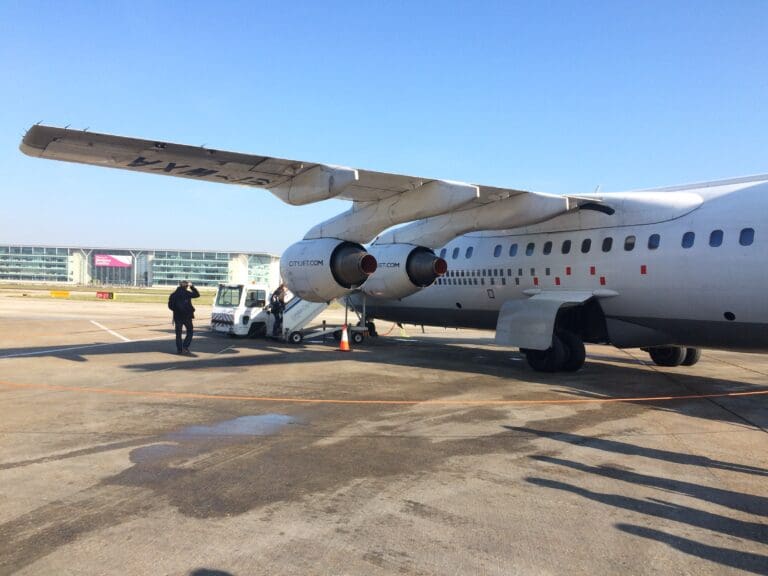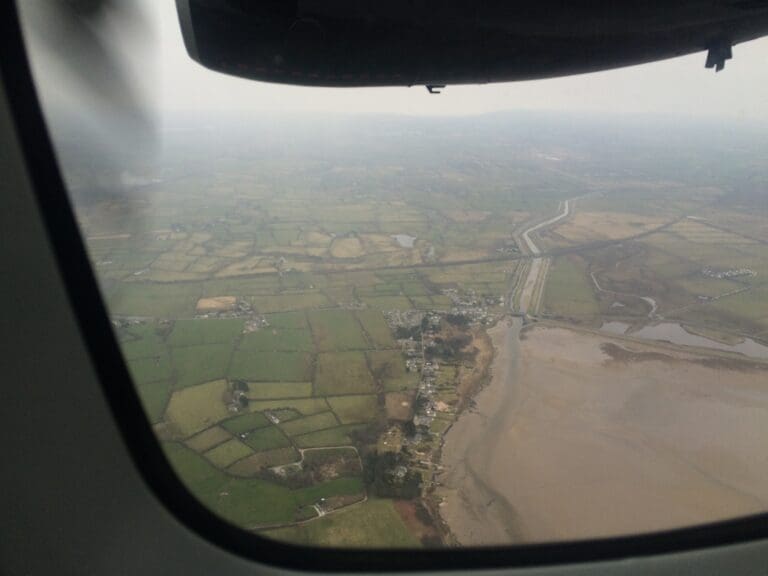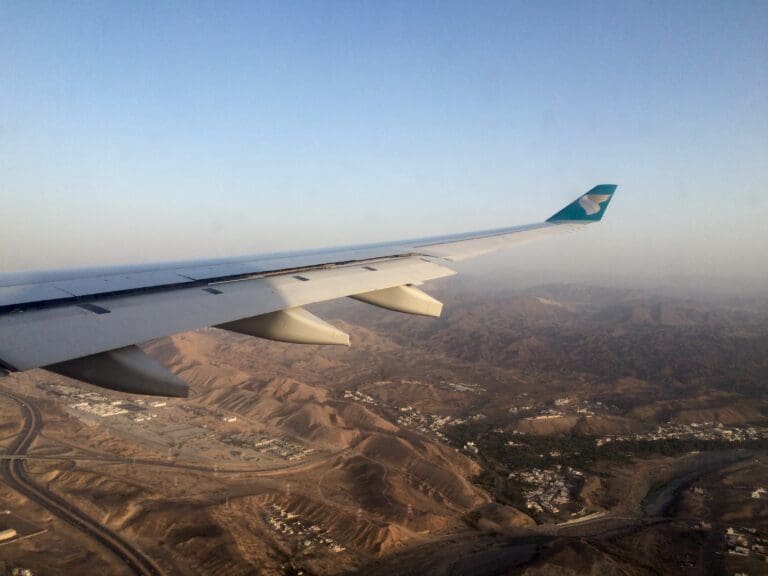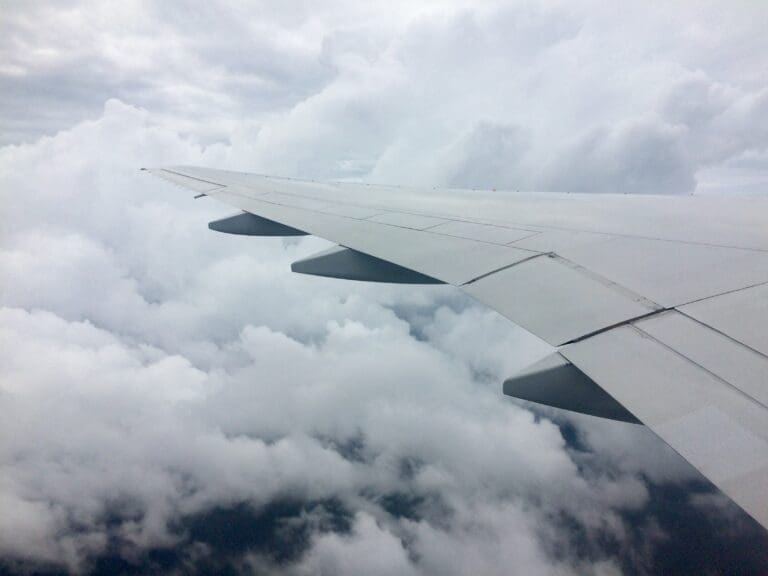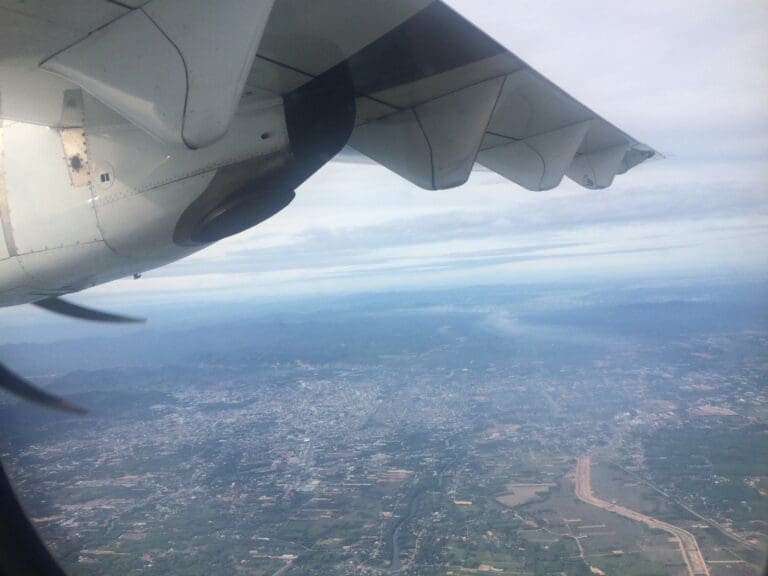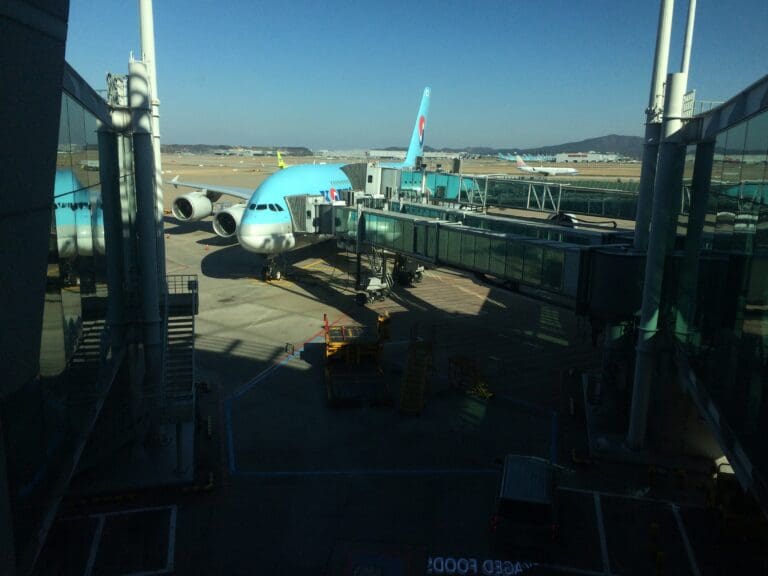Remembering Stobart Air (and Flybe!): An ATR Hop from Manchester to Southend
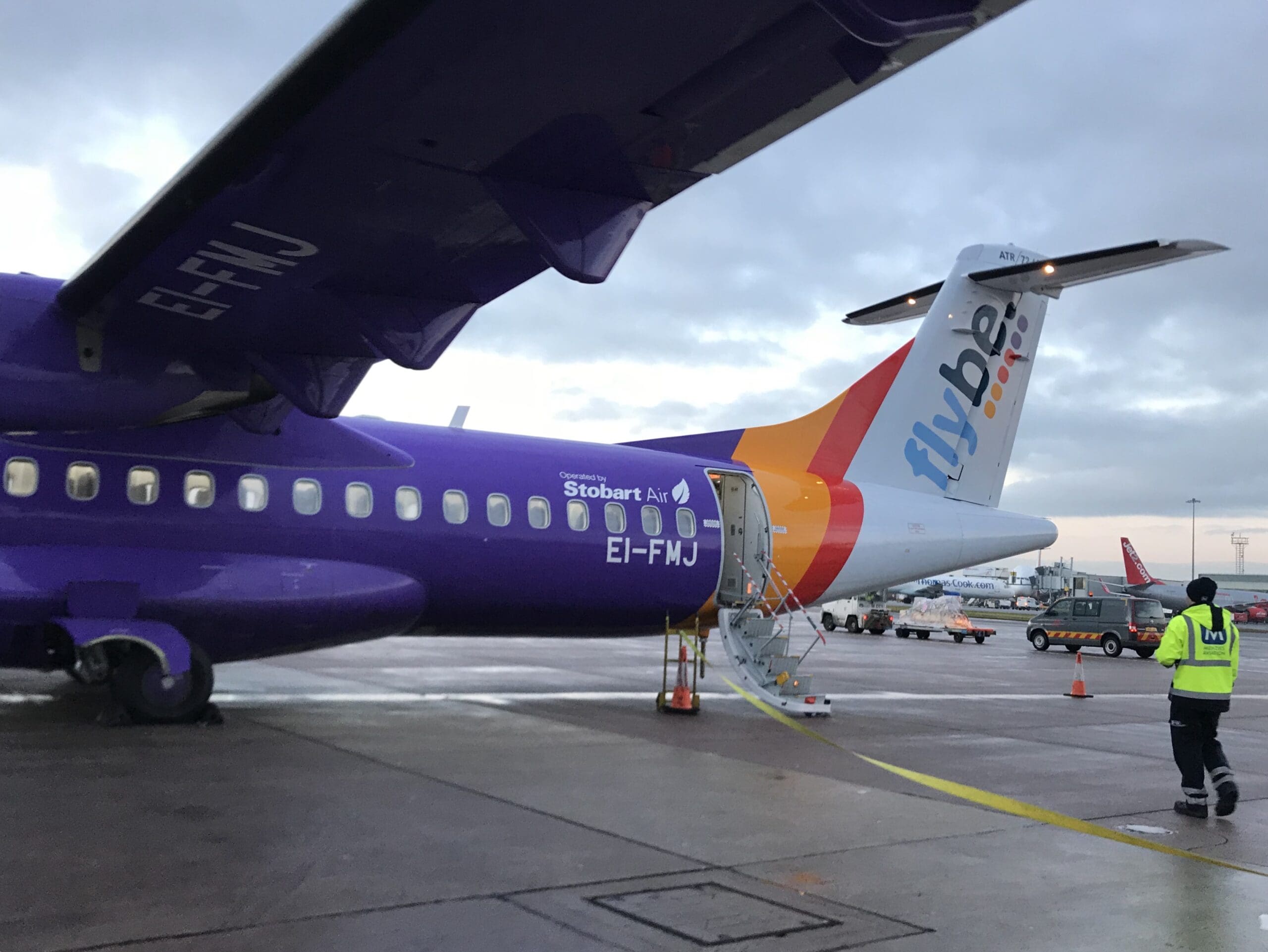
In early 2014, to much celebration, Flybe announced that they would open a base from the somewhat chronically underserved Southend Airport. From the Summer of 2014, Flybe would connect the Essex airport with six destinations across Belgium, France, Germany and the Netherlands. However, with Flybe’s aircraft tied up elsewhere, in 2014 the airline had little option but to enter into a contract with Irish ATR operator Stobart Air, who would operate a pair of ATR 72 aircraft on their behalf. Over the years, the relationship between the two carriers ebbed and flowed, with Stobart Air coming to operate an Embraer 195 for the carrier too, and even partnering with Virgin Atlantic-backed Connect Airways to launch an unsuccessful bid to take over Flybe. Stobart Air continued operating services on behalf of Flybe until the bitter end in March 2020. However, far from immune from their own financial struggles, Stobart Air would soon also halt operations before finally falling into liquidation in June 2021.
Background
Whilst studying at university in London, when travelling to and from my hometown of Sheffield I would typically enlist the help of East Midlands Railways’ direct service to and from St Pancras, or, if being particularly short of cash, I would take the Megabus or National Express coach services. However, being an aviation enthusiast, one day I decided to vary things a little and sample Flybe’s short-lived Stobart Air operated service between Manchester and Southend. Granted, this would neither prove cheaper nor quicker than the two hour rail journey, however, I would get to sample both a new airline and touchdown at a new airport, therefore this opportunity was too good to pass!
Seeing as my trip back to Sheffield in late January 2018 was rather last minute, I did not search for flights back southwards until ten days before departure. Opting to book directly with Flybe, once I entered all the relevant data into their website’s flight search engine, I was presented with the three direct flights operating between Manchester and Southend that day almost instantly. These consisted of a morning, afternoon and evening departure, with all flights operated by one of Stobart Air’s Southend-based ATR 72 aircraft. This search revealed that only one cheap ticket (priced at £34.99) remained available and so I soon selected this before continuing onwards. After entering my details, I skipped past most of the optional extras, falling victim to the seat selection where I opted to reserve Seat 2D for the princely sum of £6.50 before I went ahead and made payment. Once done, I received my booking confirmation via email almost instantly and was all set to embark on my Stobart Air adventure.
The Journey
After my short and pleasant break in Sheffield, I woke up well before sunrise to commence my roundabout journey back to London. Thankfully, with plenty of direct trains running non-stop between Sheffield and Manchester Airport, reaching the airport in time for my 0825 flight to Southend would neither be difficult nor costly. Focusing on the latter, with a 16-25 Railcard I ended up paying £6.95 for the early morning train ride. This is £0.95 cheaper than a ride on the Piccadilly Line between London King’s Cross and Heathrow Terminal 5, and, taking 1:15 to make this trip, this is only fifteen minutes slower than this journey.
After lugging myself through the dark and chilly streets, I arrived at Sheffield’s almost deserted station at around 0500 where only a few other passengers heading off on services to London and Manchester Airport could be seen milling around. Without any delay, once I purchased my ticket from one of the machines, I headed over to the platform where the Transpennine Express diesel multiple unit could be seen waiting to make the journey across the Peak District to Manchester. At the clock struck 0511, the train pulled away from the platform and headed out through Sheffield’s leafy southern suburbs before entering the long Totley Tunnel and emerging from this minutes later in the heart of the Peak District. Unfortunately, the darkness outside meant that nothing other than the very faint lines of the hills and passing lights of small towns and villages could be seen as we sped westwards. Once the train passed through the national park, this arrived in the urban sprawl of Greater Manchester, making its first stop of the journey at Manchester Piccadilly. Here, as one would expect, a fair number of airport workers and suitcase-wielding passengers boarded and following a ten minute pause, the train headed out of the station in the opposite direction before arriving at Manchester Airport right on time at 0626.
Once off the train, I headed through the ticket barriers and up the escalators, soon arriving at the heavily blue-lit Skylink tube that connects the station with the airport’s three terminals. As with all of Flybe’s services from Manchester, my flight down to Southend would depart from Manchester’s Terminal 3, which at that time also served Air France, British Airways, Easyjet, KLM and Ryanair as well as several other airlines. After walking along the tube for several minutes, receiving decent views over parts of the airfield, I arrived at Terminal 1’s busy check-in hall where most seemed to be checking in for Thomas Cook flights to destinations across Europe and further afield. Admittedly, getting to Terminal 3, the furthest terminal from the station, is a little more complicated than reaching the other two terminals, involving a lift down from the Terminal 1 check-in hall to street level followed by a short outdoor walk.
After a brisk walk in the very chilly January air, I entered Terminal 1 in the ground floor arrival area and, having not checked-in online, I made my way up the stairs where I headed to one of the many self check-in machines on the largely empty first floor departures level. Upon selecting the system’s Flybe option (those flying off with Air France, British Airways and KLM could also use these machines), I was presented with the airline’s splash screen and four language options (English, French, German and Spanish). As with the collection of train tickets at the UK’s stations, passengers can retrieve their bookings via their payment card, or, via a more orthodox method such as entering their booking code or passport number. Opting to enter my booking code, after a concerningly long thirty-second wait, I was presented with my flight details which revealed that my seat had been one row back, leaving me with seat 3D. Still enjoying a window seat, I could not complain about this move, however, in this situation, some may be understandably disappointed at their seat being moved despite having paid to reserve this. A quick look at the seat map revealed that few other selectable seats were present, suggesting that the flight was going to be full. After this, my boarding pass was printed out and, as is usually the case with those printed at self check-in machines, came in the form of a rather plain-looking black-and-white document.
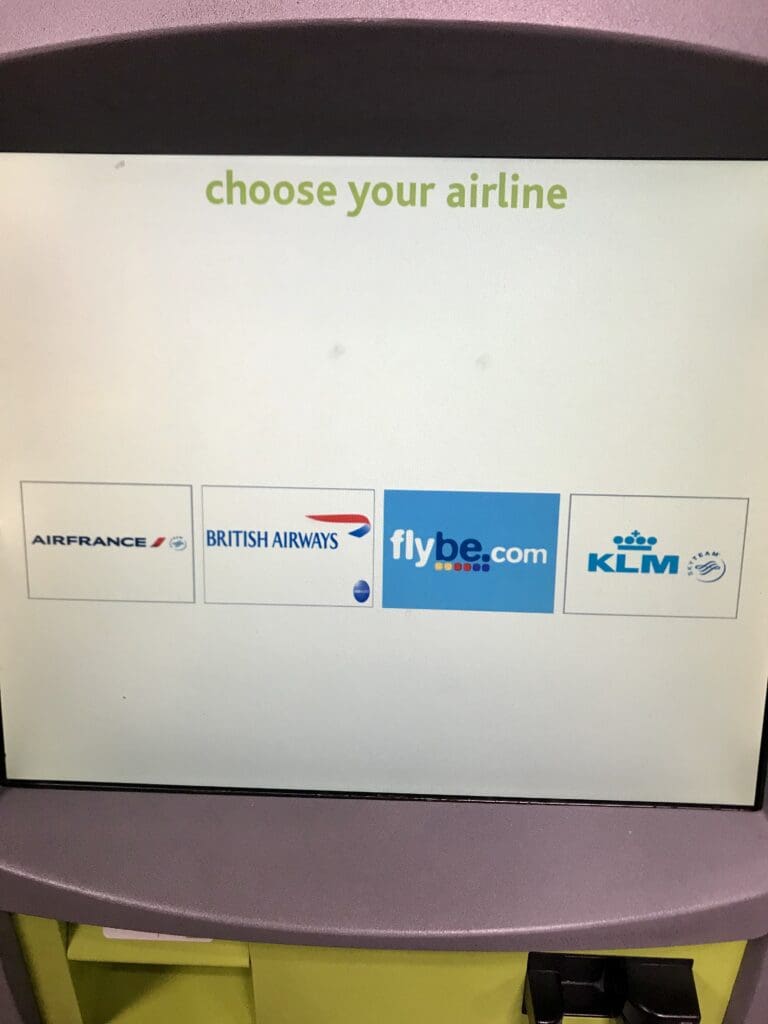
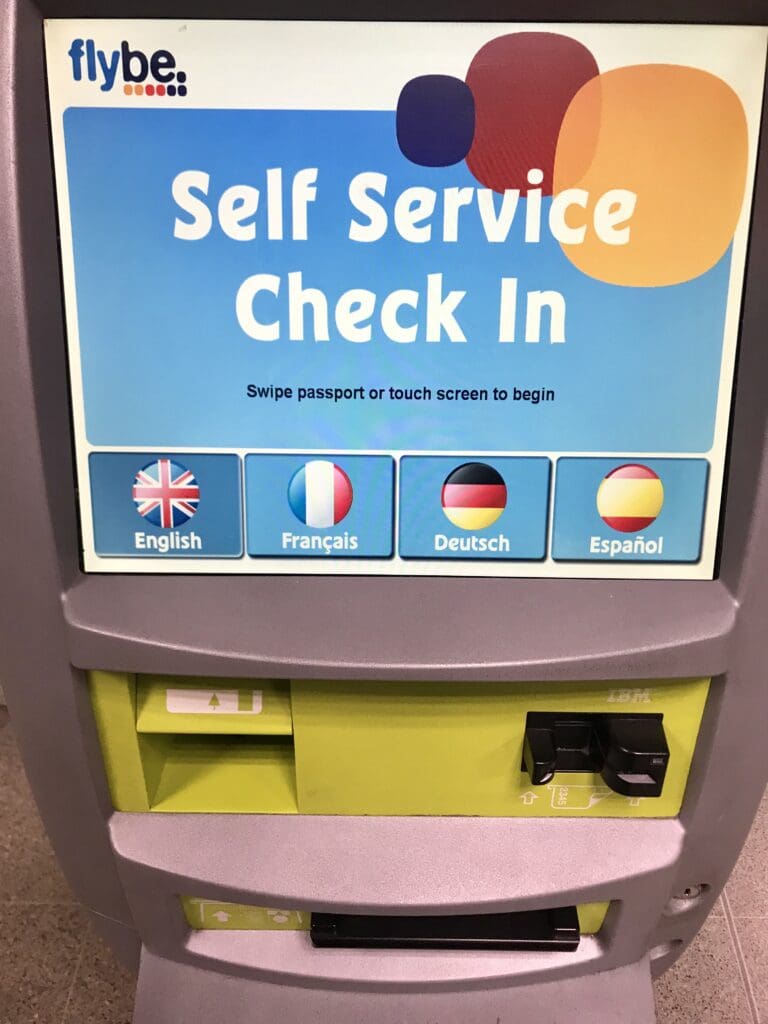
Once I had received my boarding pass, I headed towards security and after an identity and boarding pass check, I was greeted by the joyous sight of only minimal queues. The lack of passengers that morning ensured that security was a fairly straightforward affair and after the usual checks I entered the airside area no more than five minutes after I had arrived in the terminal. With plenty of morning flights, it came as little surprise that the airside area was rather busy that morning and I spotted relatively few available seats in the main area (although these were plentiful for those willing to traverse down one of the terminal’s two piers). For those seeking some preflight dining and refreshment, the terminal’s airside area is home to multiple cafes and food outlets including high street chains such as Caffe Nero, Costa Coffee and Delice de France. Unsurprisingly, these proved rather popular that morning, each with long queues and so I decided to pass on these options. That morning, I was pleased to find that the terminal’s wifi network worked well, although only a complimentary hour of service was given, whilst the terminal appeared to be in a relatively clean and tidy state. My only real complaint was the apparent lack of charging points.
Wanting to wait for my flight in relative peace away from the hustle and bustle of the terminal’s main waiting area, ideally with views of the action outside, I headed down the A pier. From this area, I watched the steady stream of arrivals cutting through the dark morning sky before landing on Runway 23R. These ranged from small turboprops such as ATR-72s, Dash 8 Q400s and a Dornier 328 to larger widebodies from the United Arab Emirates taking the form of the Airbus A380 and Boeing 777-300ER, operated by Emirates and Etihad Airways respectively. By 0725 the skies gradually brightened, illuminating the airfield and at 0736, the inbound ATR 72 touched down at the end of its short journey up from Southend. Several minutes later, this turboprop pulled into the terminal, arriving at Gate 142, or, Stand 42.
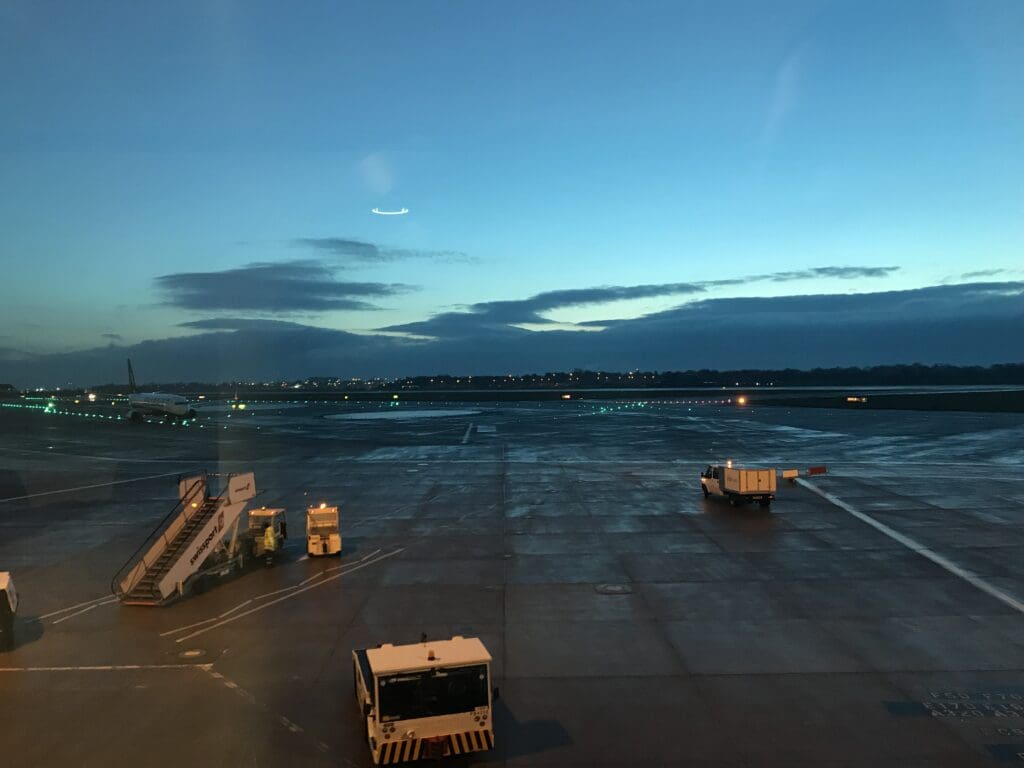
At the time of my flight, Stobart Air operated two Southend-based ATR 72s on Flybe’s network of services from the airport. One of which was painted in Flybe’s distinctive purple livery, whilst the other sported an all-white colour scheme. That morning, the former aircraft was to operate the flight to Southend, this being an ATR 72-600 bearing the registration EI-FMJ. This particular aircraft made its first flight from Toulouse Blagnac with the test registration F-WWEZ in early November 2015 before being delivered to Stobart Air in an all-white livery at the end of that month. Commencing its life operating services on behalf of Aer Lingus Regional, the aircraft was painted into the airline’s unmistakable green and white livery and given the name Gobnait, or St Abigail. During this time, the aircraft primarily operated flights between Ireland and the UK, however, in September 2017, the aircraft was painted into the purple Flybe livery and flown across to Southend to commence its new life operating on behalf of Flybe. In the week before my flight, the aircraft had flown a total of 28 sectors connecting Southend with Groningen, Manchester and Rennes, travelling around 5,300 miles.
After a relaxing hour watching the arrivals, I made my way back to the terminal’s main waiting area and over to the gate in preparation for boarding. Whilst my boarding pass had claimed that this would commence at 0755, the gate for the flight was not revealed until this time. Being one of the closest gates to the main waiting area, once the gate number appeared on the departure boards, a short queue of passengers formed almost immediately. At precisely 0805, the gate agent announced that boarding would commence immediately and that this would be done via row numbers in order to ease congestion. However, with no more than 25 passengers standing in line, I found this a little odd. Nevertheless, seated near the front of the aircraft, I ended up being one of the first to be allowed to board, with those seated in rows 1 to 10 invited to board the aircraft first. Heading through a set of screen doors, I soon had my identity checked and my boarding pass scanned before I headed down the stairs and reached a short queue. Once all those seated in the first ten rows had come forward for boarding, an airport worker arrived to escort us all the short distance to the main cabin door at the rear of the aircraft.
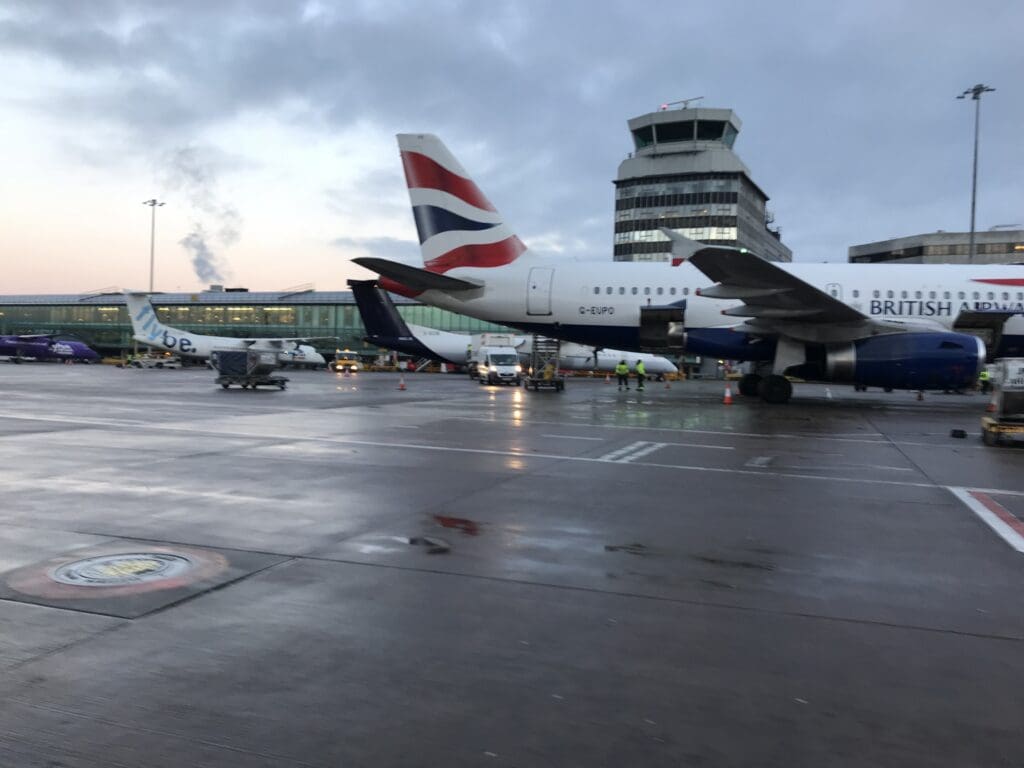
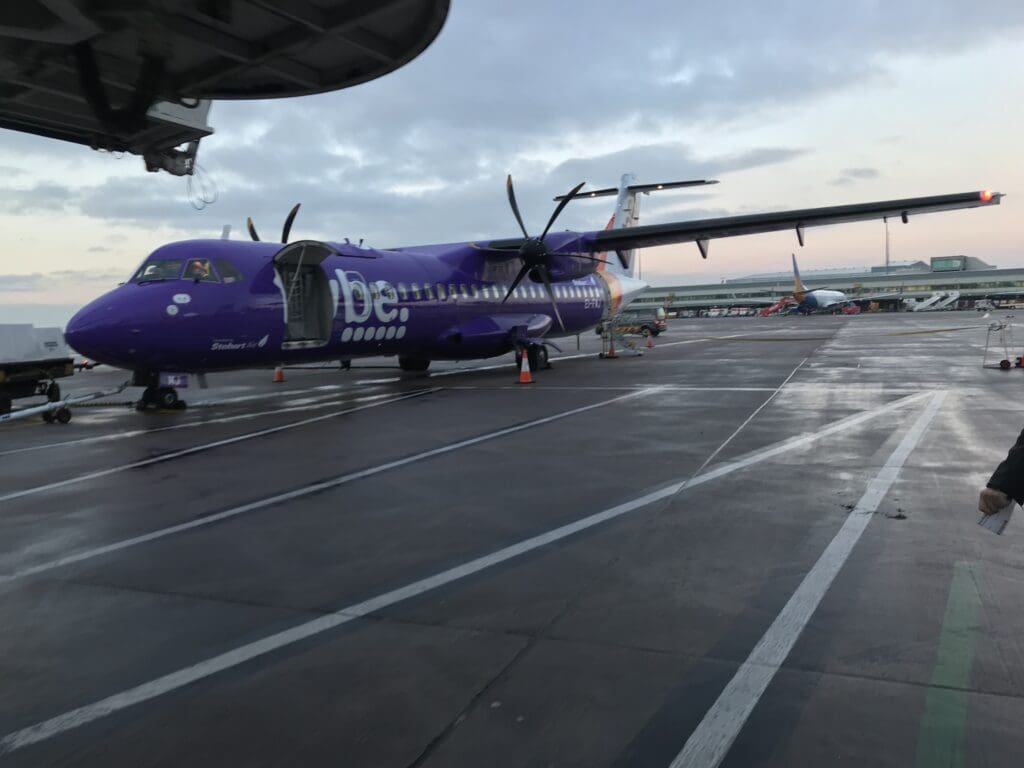
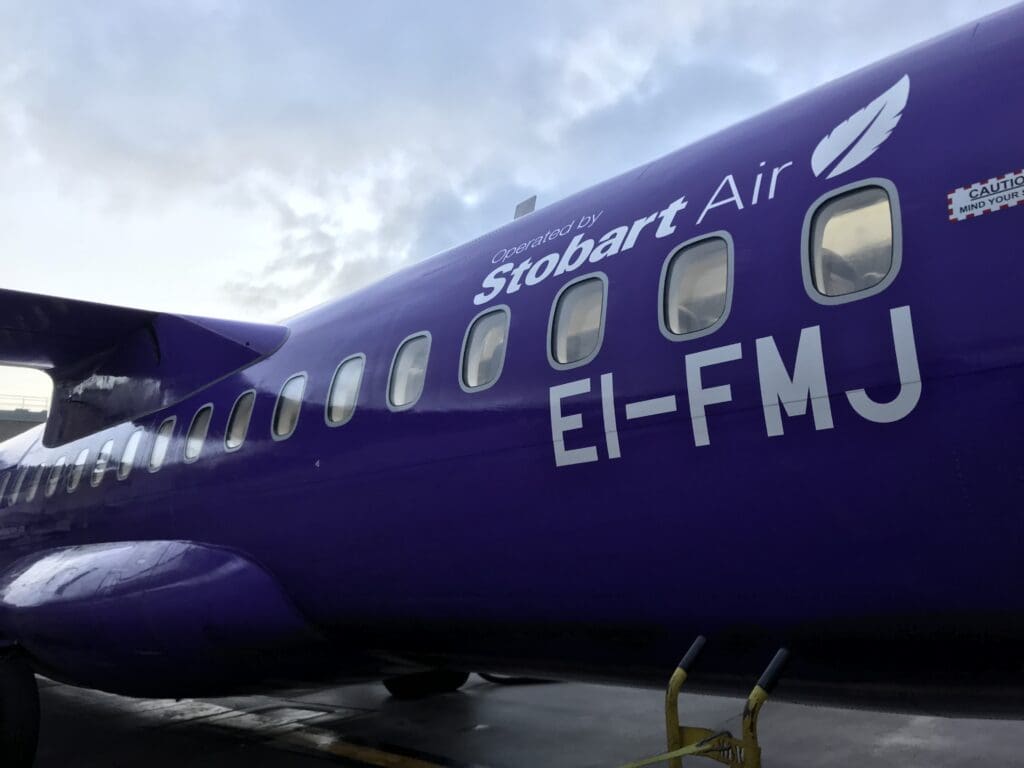
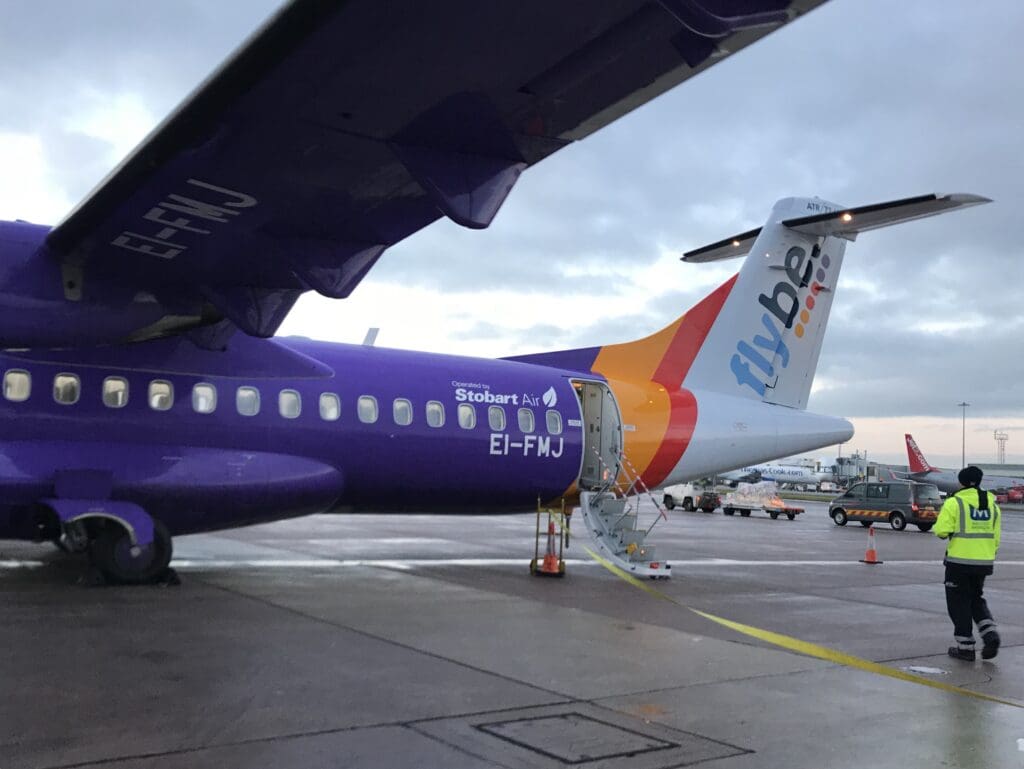
Following a short wait in the cold January air, I clambered up the steps that are built into the aircraft’s door and arrived in the warmth of the minuscule galley at the rear of the aircraft. As soon as I was onboard I was given a warm welcome by one of the two flight attendants who checked my boarding pass before I entered the bright and modern cabin and made my way towards the front of this. Upon arriving at the front of the aircraft I was given another greeting by the other flight attendant standing at the front of the cabin who advised me to keep my seat belt unfastened as refuelling was underway. Onboard, each of the aircraft’s seventy seats is covered in a dark grey faux leather and despite appearing to be rather thin, I found these to be pleasantly comfortable and offered a decent amount of legroom for a regional aircraft. Aside from the streaky windows, the cabin appeared to be spotlessly clean and was in tip-top condition with no signs of wear and tear. Turning to the seatback pocket, this contained a battered-looking sickbag (thankfully not used!), a Stobart Air safety card, a copy of the January 2018 edition of Flybe’s Flight Time magazine and a BoB menu offering a slightly different range of products from those offered on those flights operated by Flybe themselves, entitled Café Air.
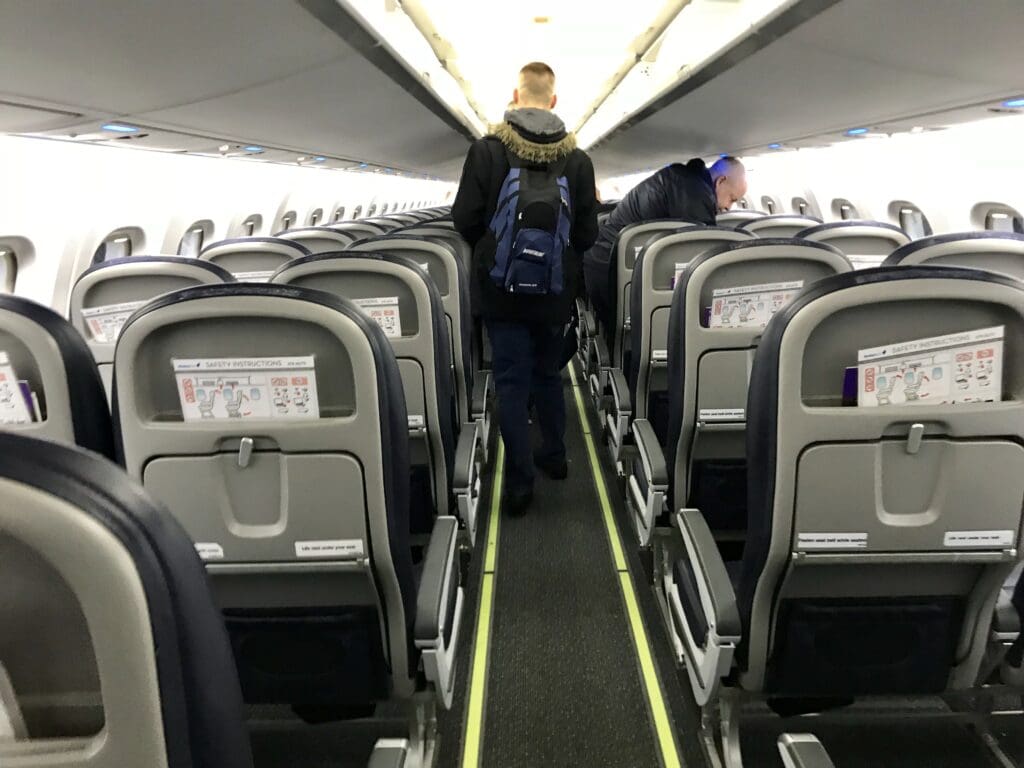
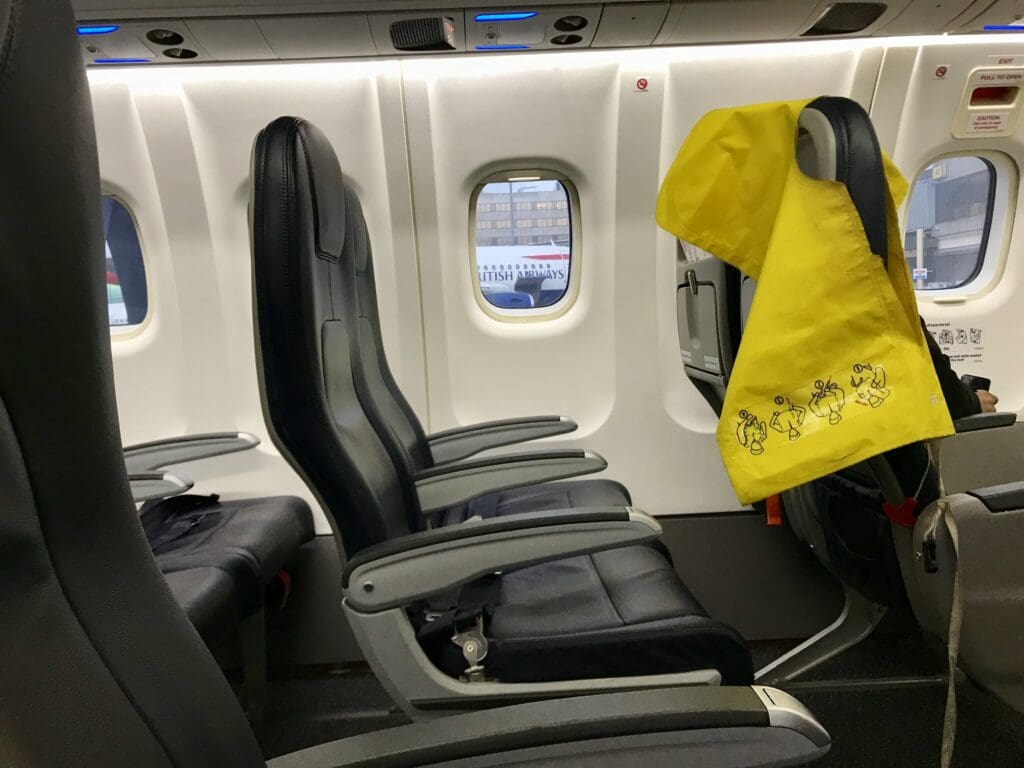
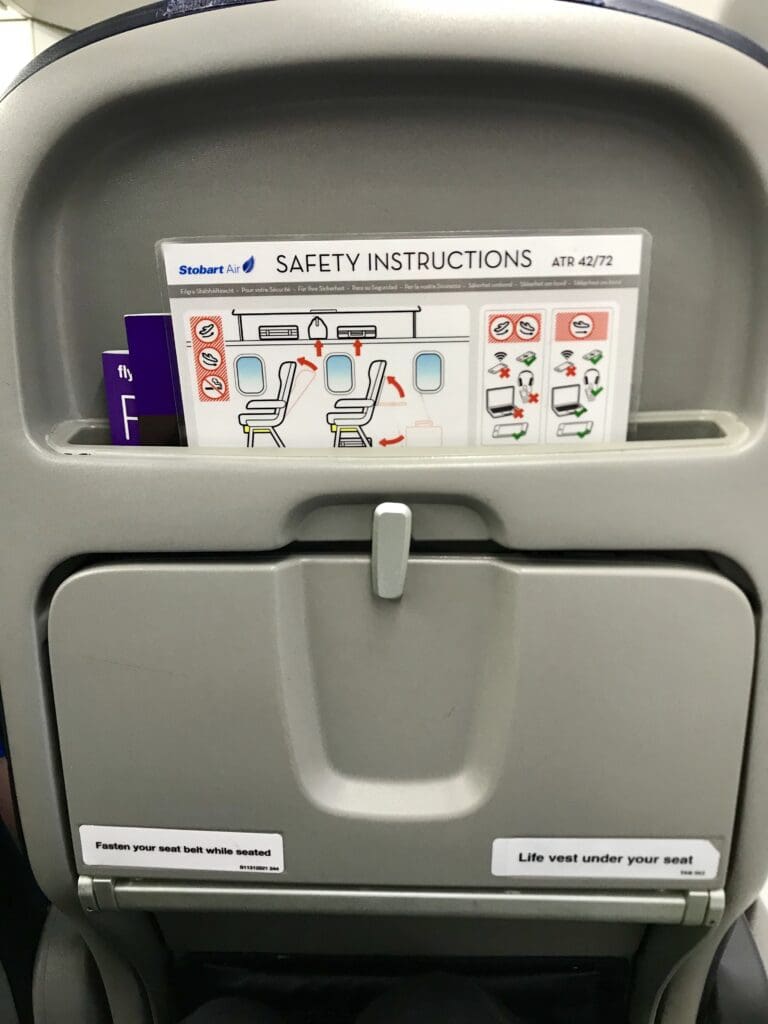
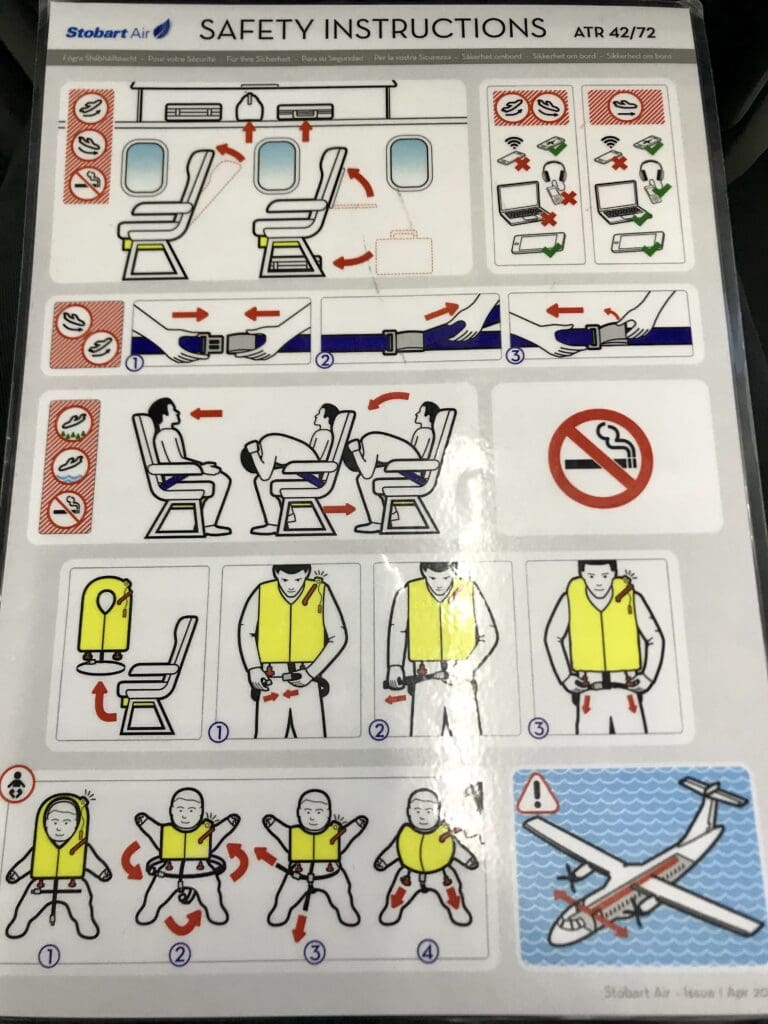
That morning, boarding was completed rather quickly and the aircraft appeared to be no more than a third full, with most rows at the front of the aircraft being completely empty. Onboard, judging by my fellow passengers’ attire, most seemed to be flying for business. After checking with the flight attendant, I moved back to my original seat and got settled in for the short flight. Once all were onboard, seeing as the aircraft was still being refuelled, there was very little that could be done by the cabin crew to ready the aircraft for departure. However, during this wait both of the flight’s friendly cabin crew members seemed to be proactive in chatting to passengers, thereby making a good first impression. Once refuelling was complete, the flight’s Dutch-accented Captain performed an upbeat welcome announcement, informing us that the final paperwork was being filled in and moved on to briefly introduce each crew member before detailing the weather in Southend. This was followed by a quick announcement from one of the flight attendants, after which both took to the aisle and performed a safety demonstration which was accompanied by a pre-recorded announcement.
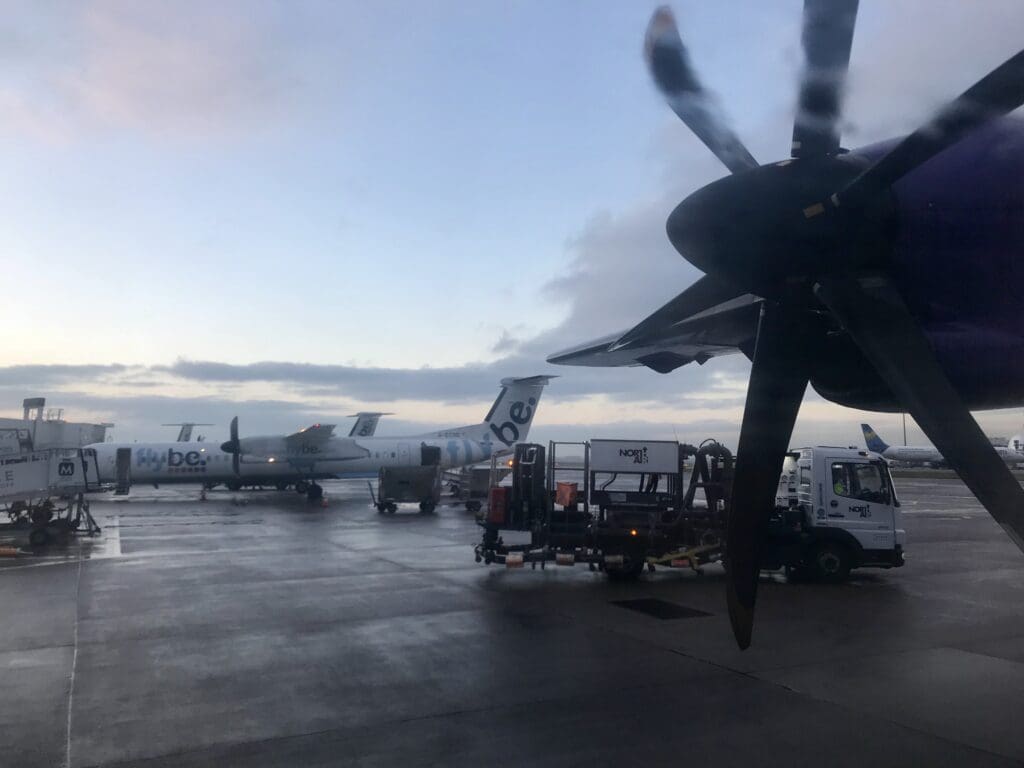
At 0822, three minutes ahead of schedule, the aircraft gently jolted backwards and commenced its pushback as the two engines spooled up into life ready to power us the aircraft through the winter skies. Following a short pause whilst the tug was disconnected, the aircraft began its taxi to the active runway. Within a couple of minutes, the aircraft came to a halt in order to allow for a Jota Aviation Avro RJ85 to land on Runway 23R following a positioning flight up from its base at Southend. Once this aircraft had safely landed, the ATR made its way across this runway and soon taxied onto Runway 23L. There, the aircraft paused once again, this time allowing for an American Airlines Airbus A330 to touch down on the runway after its overnight flight from Philadelphia before ‘Stobart 1 Mike Alpha’ was cleared to depart. At 0831, the ATR’s two PW127 engines noisily powered up commencing the aircraft’s relatively short and powerful takeoff roll.
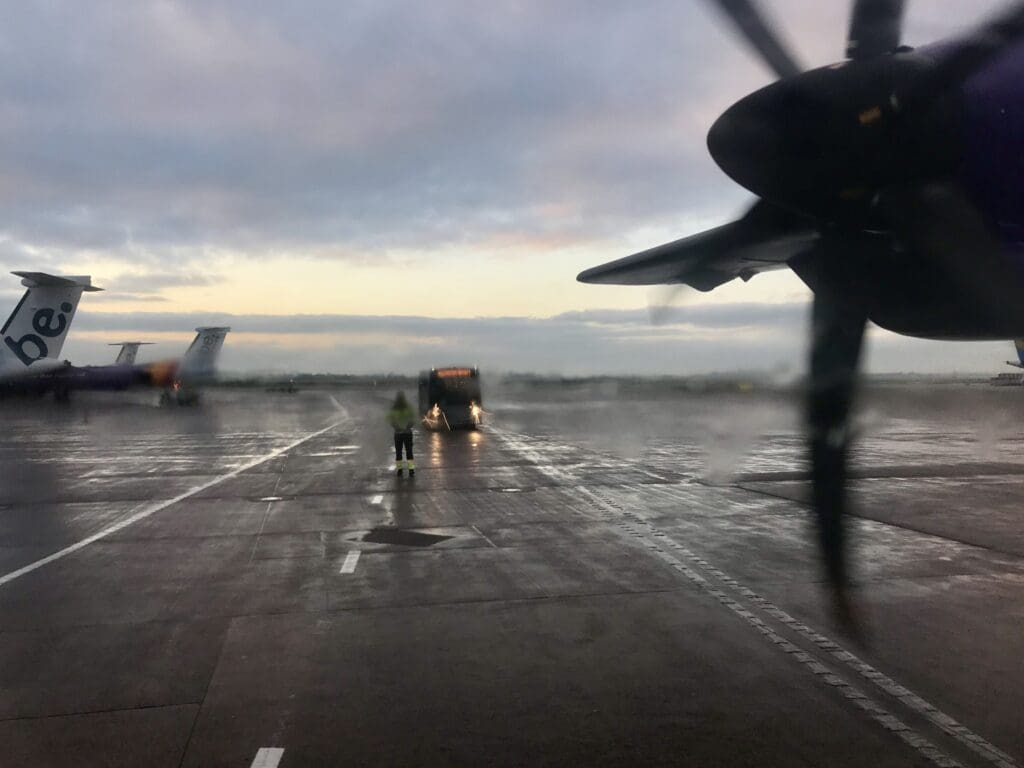
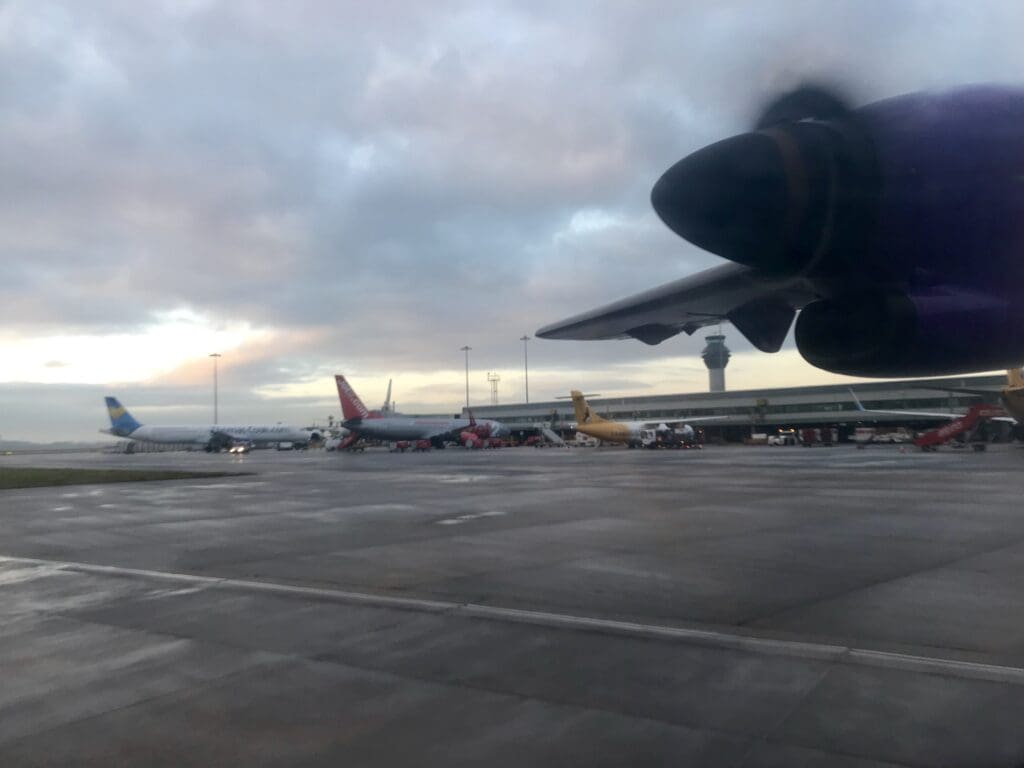
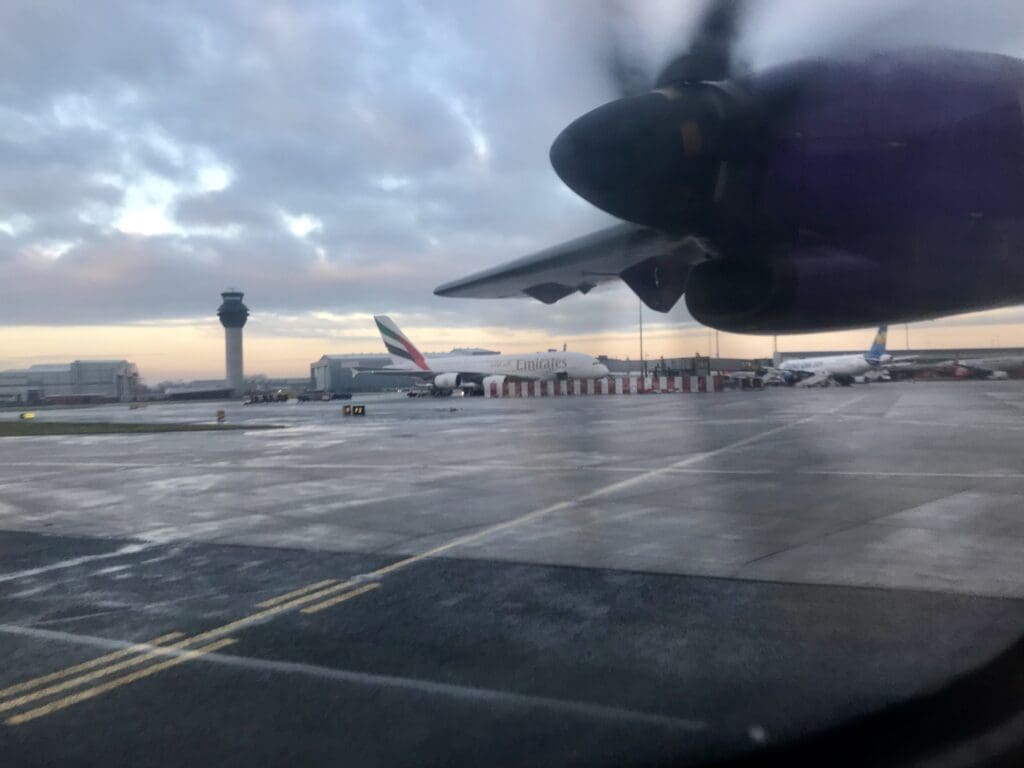
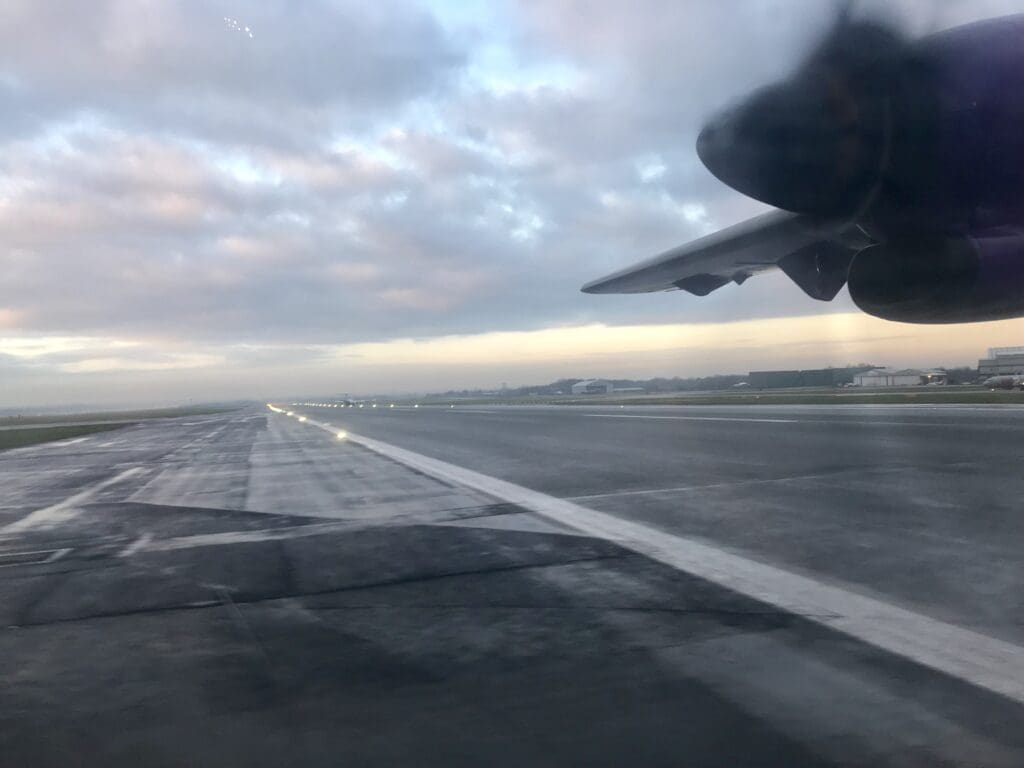
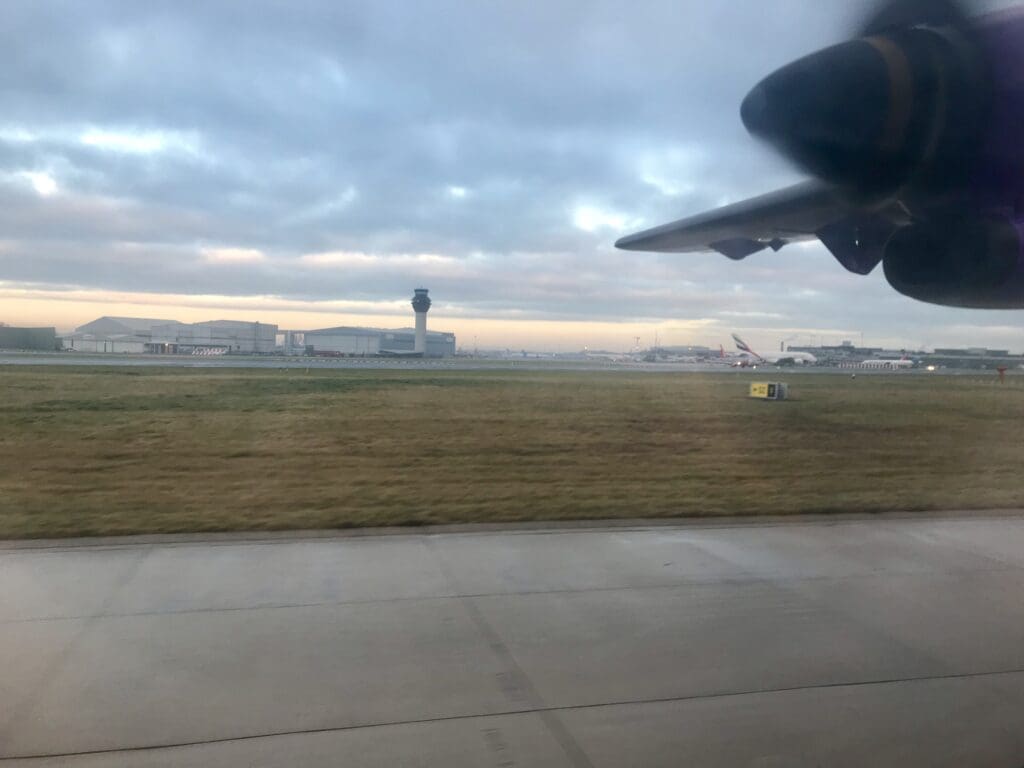
Once in the air, the aircraft made a shallow climb over the green fields of Cheshire and at an altitude of 1800 feet, the aircraft gently banked, before rolling out on a southerly heading that would take us towards Stoke-on-Trent. A short time later the aircraft passed through a thin layer of cloud at which point the cabin lights came on and a pre-recorded message regarding seatbelts rang out through the cabin. Around nine minutes after taking off, the ATR passed through 10,000 feet and the two cabin crew members pushed a small cart uphill to the front of the cabin to commence the flight’s BoB service. Examining the menu, the offerings onboard appeared to be very similar to those offered by just about any LCC consisting of your usual range of crisps, biscuits, chocolate bars, snack boxes and drinks, these included a selection of items from Japanese-inspired restaurant chain Itsu. Perhaps unsurprisingly given the length of the flight, most seemed to pass on the offer of any food or drink.
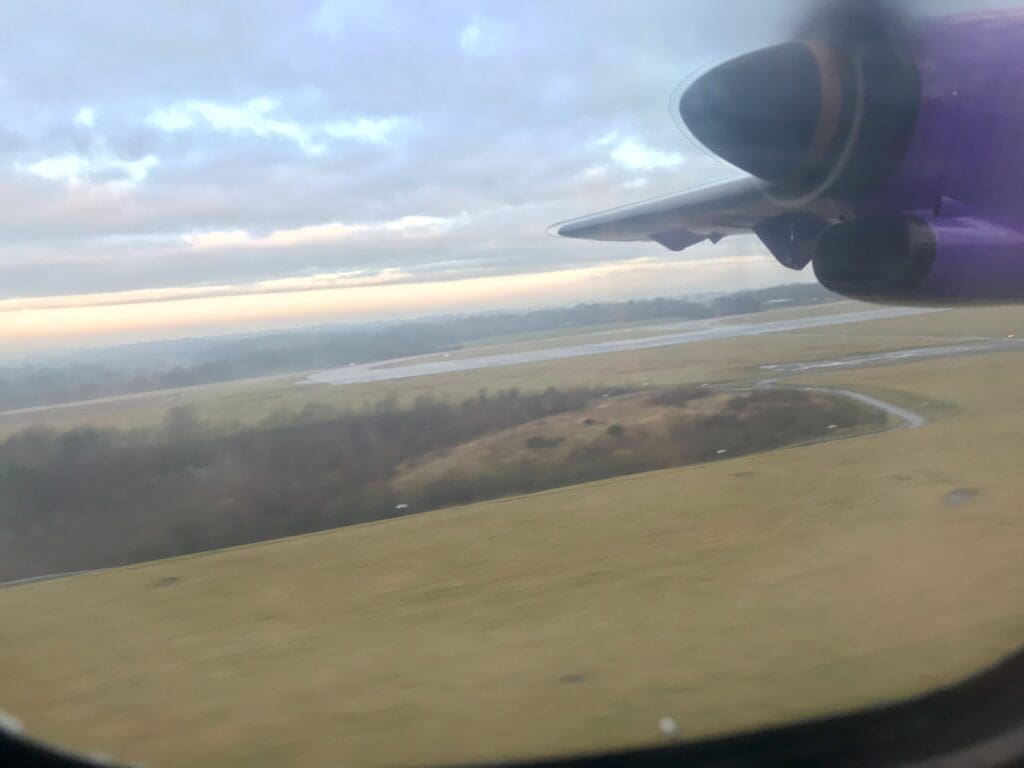
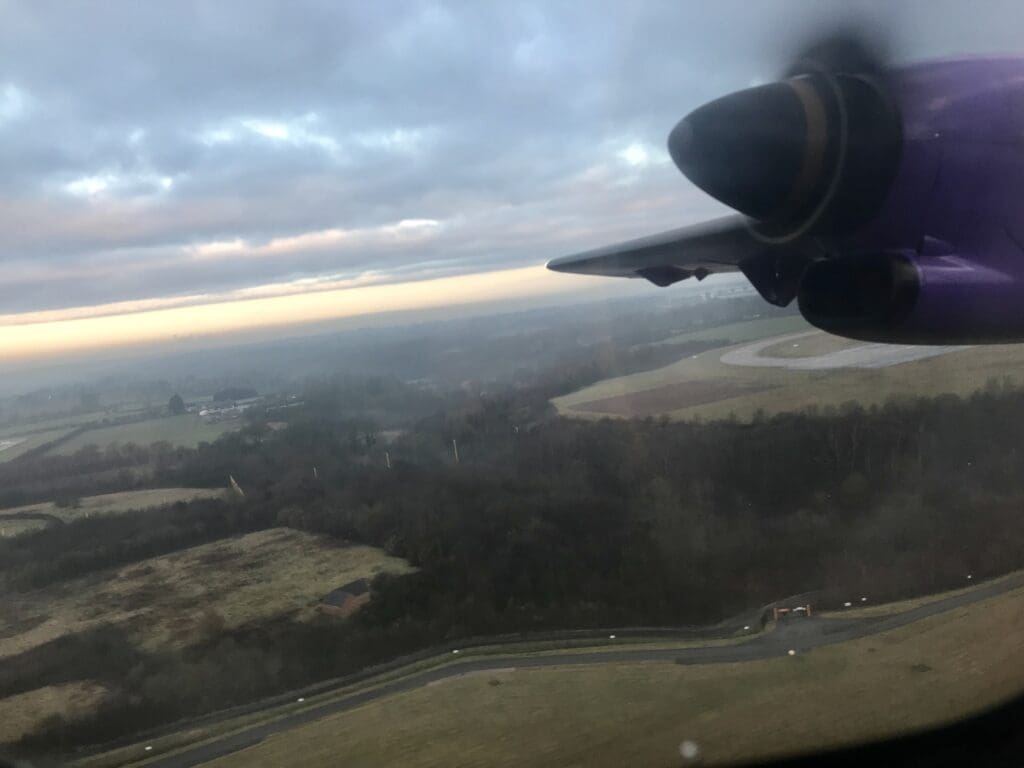
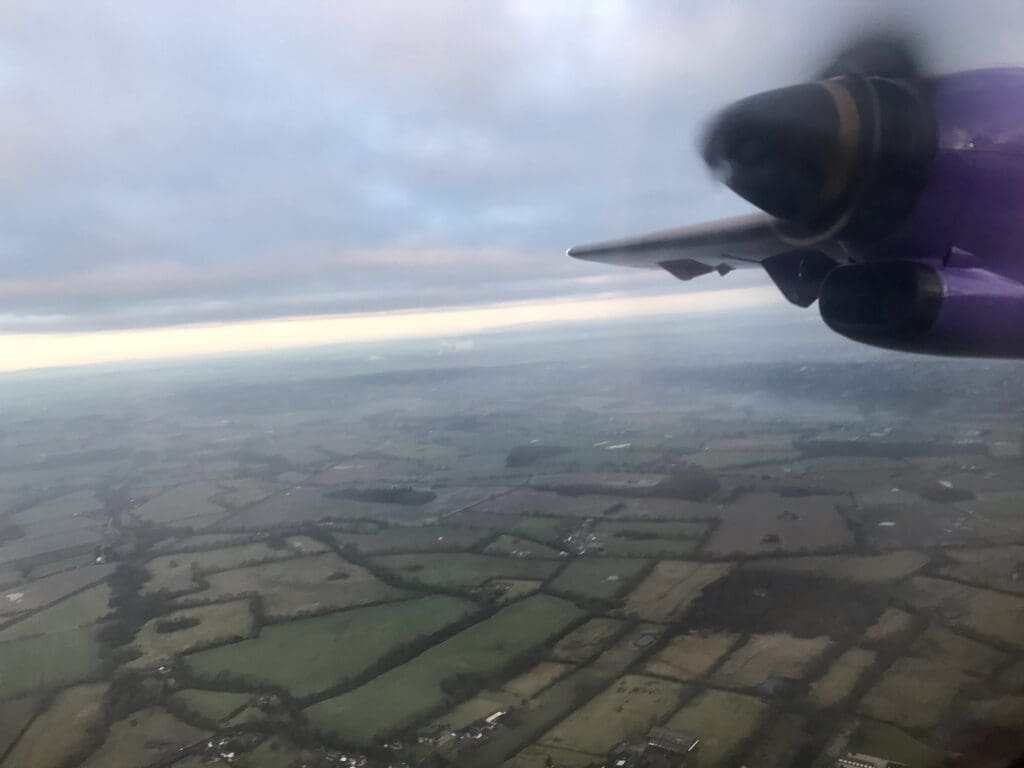
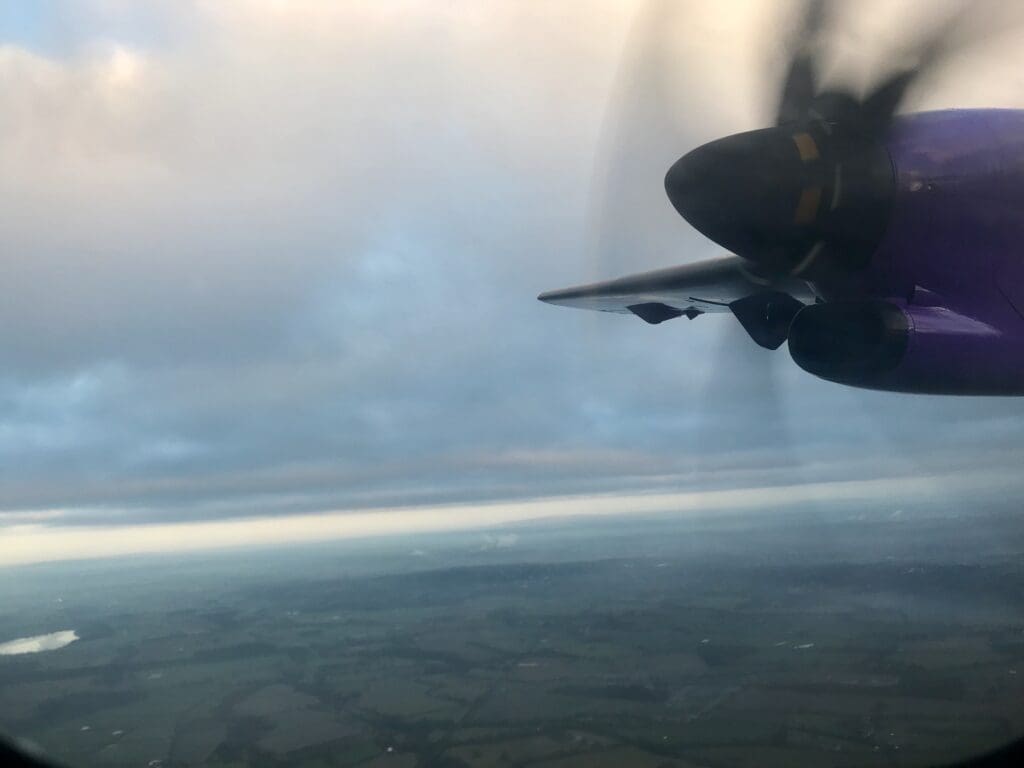
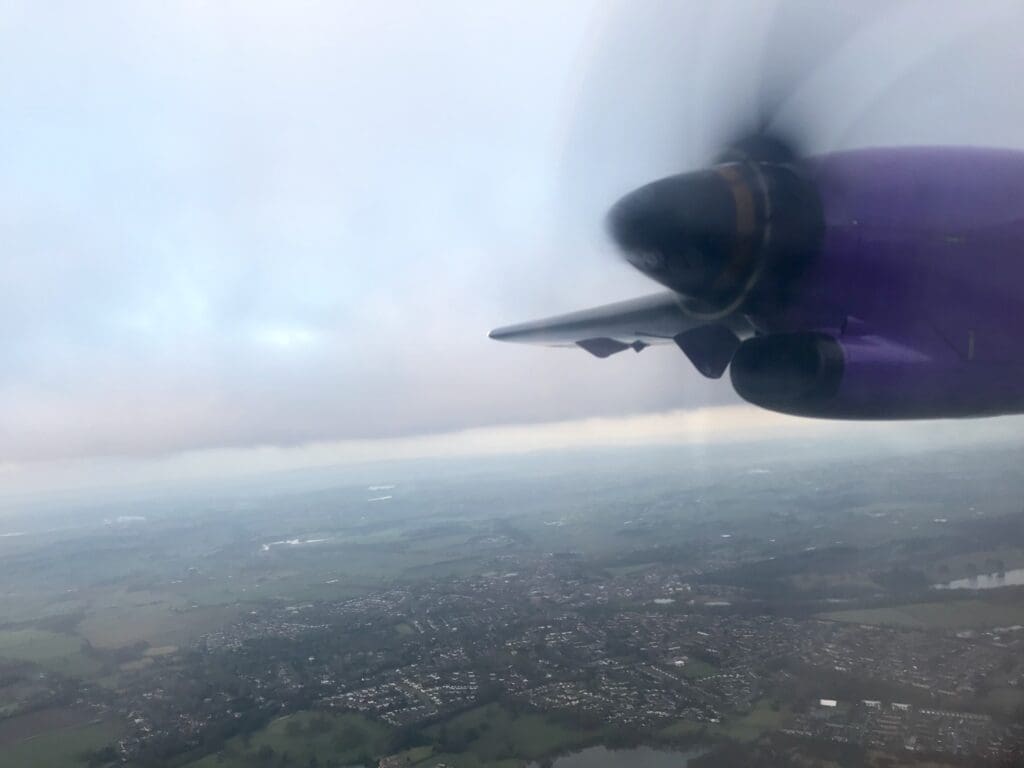
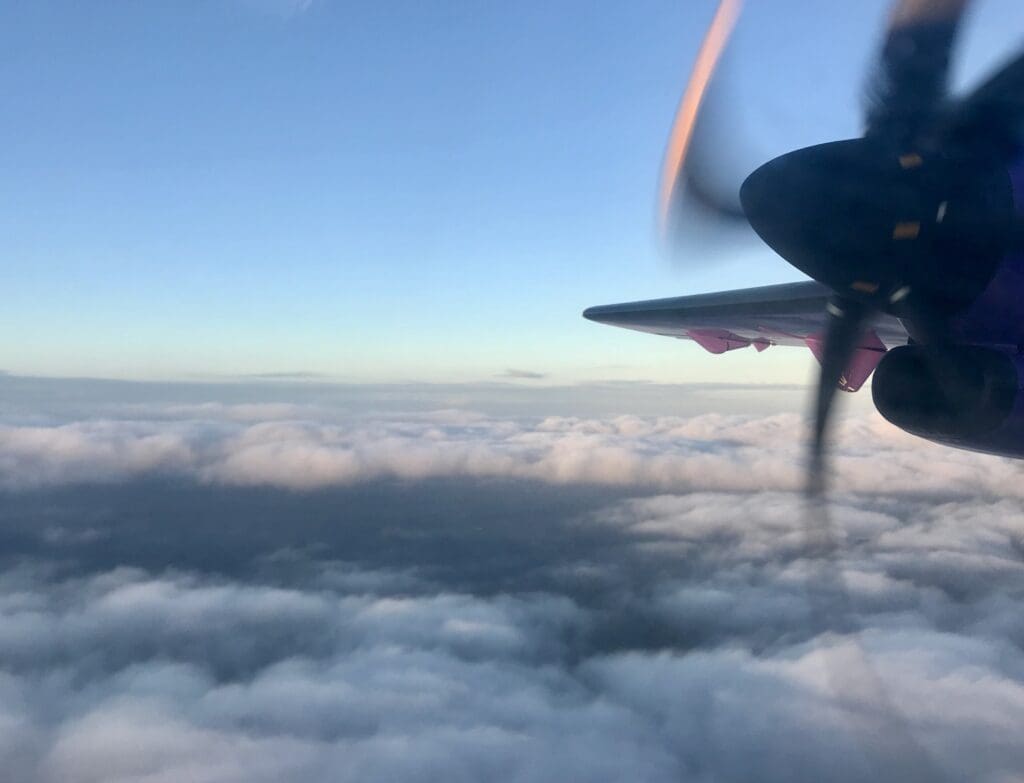
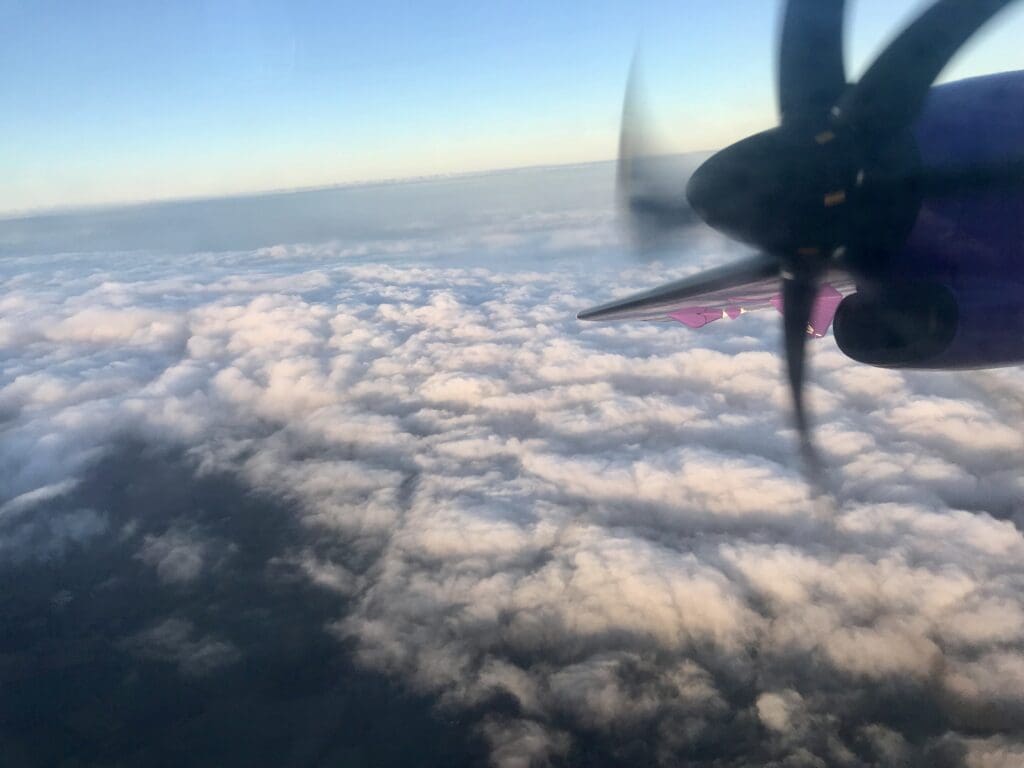
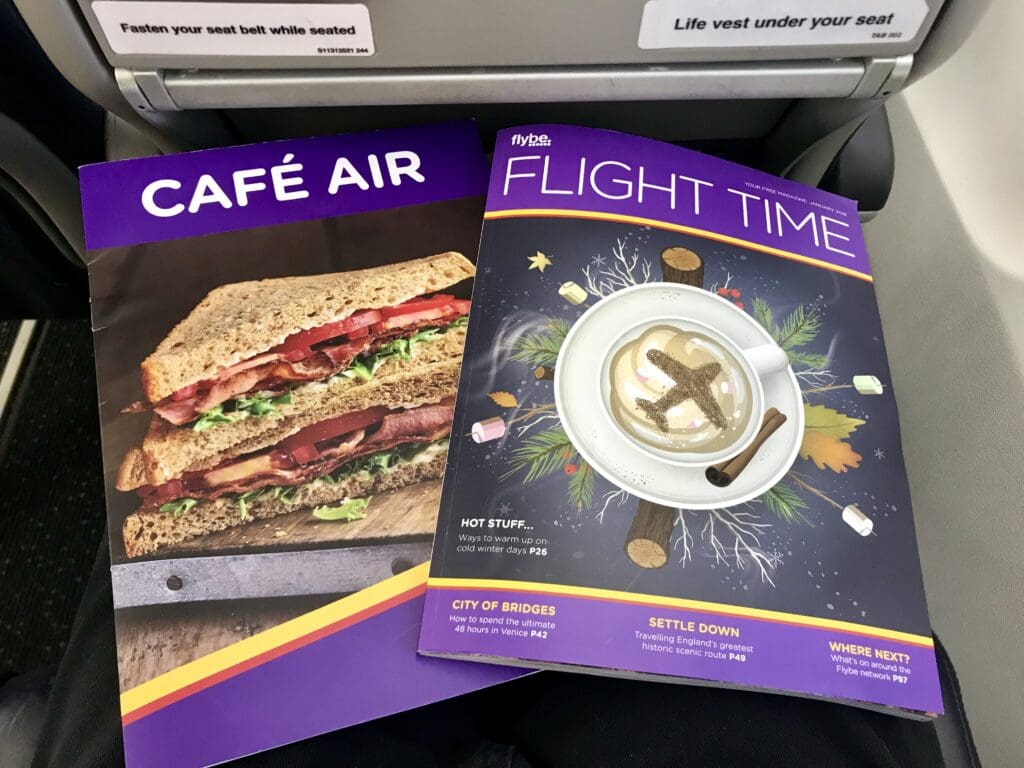
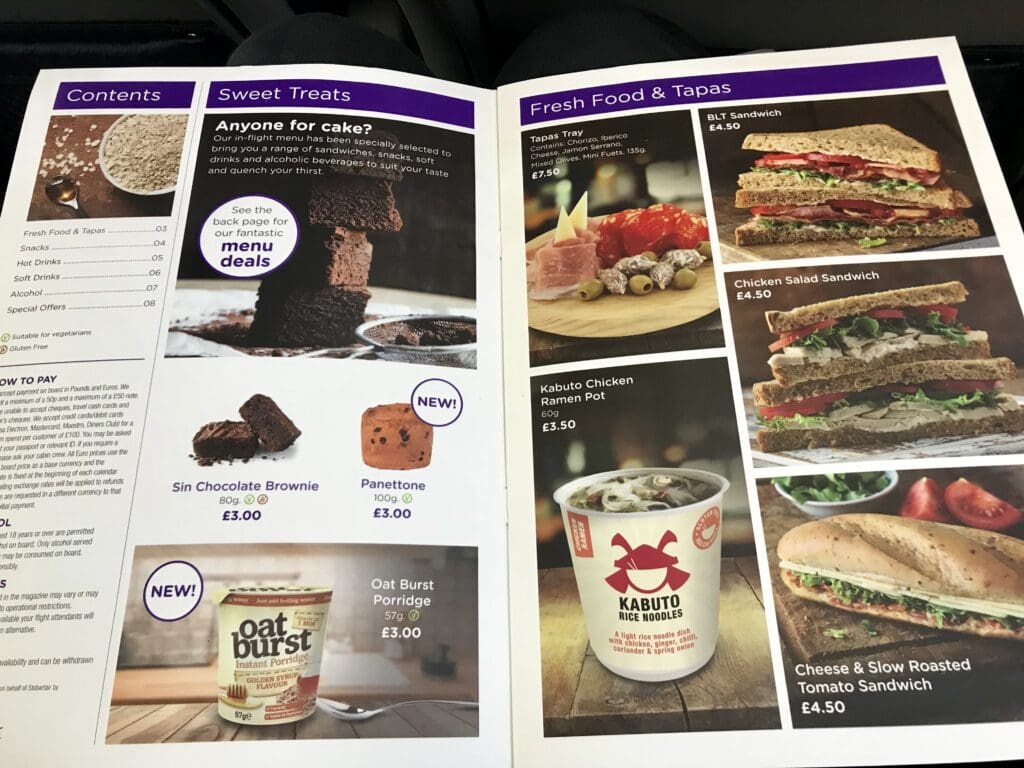
After passing Stoke-on-Trent, the aircraft reached its low cruising altitude of 17,000 feet and continued to fly southwards, passing to the east of Birmingham and over Coventry before heading towards the Warwickshire town of Royal Leamington Spa. Upon reaching the DTY12 waypoint, the aircraft turned southeast and passed over the Silverstone Circuit, Bletchley and Milton Keynes at which point the aircraft could be felt commencing its descent. This was almost instantly confirmed with the reillumination of the seatbelt signs at which point the crew performed the usual pre-arrival announcement. Thanks to the light load and the fact that most passengers had remained in their seats for the duration of the flight, the cabin crew were able to conduct their final checks before arrival rather quickly before strapping themselves into the jumpseats for landing.
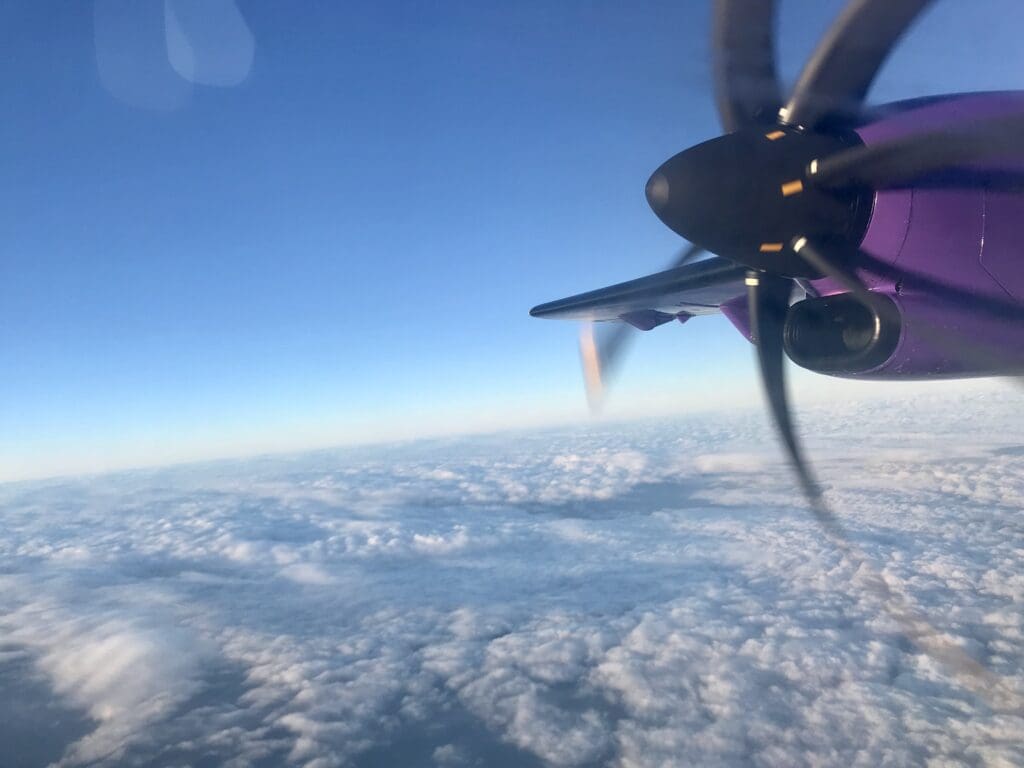
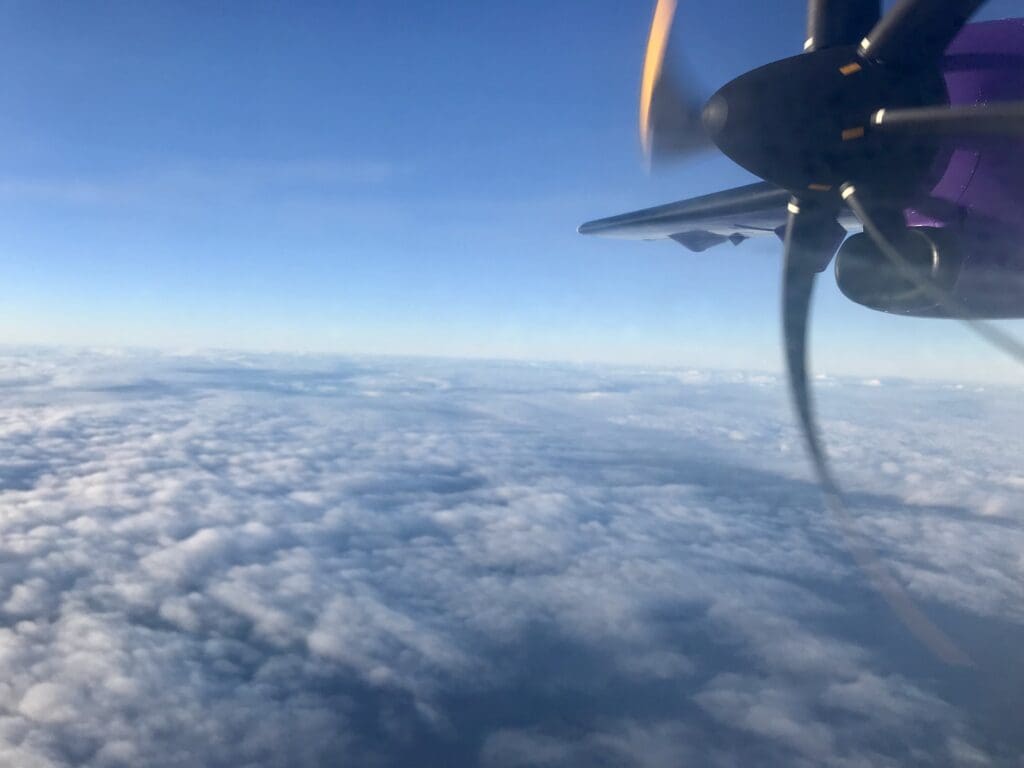
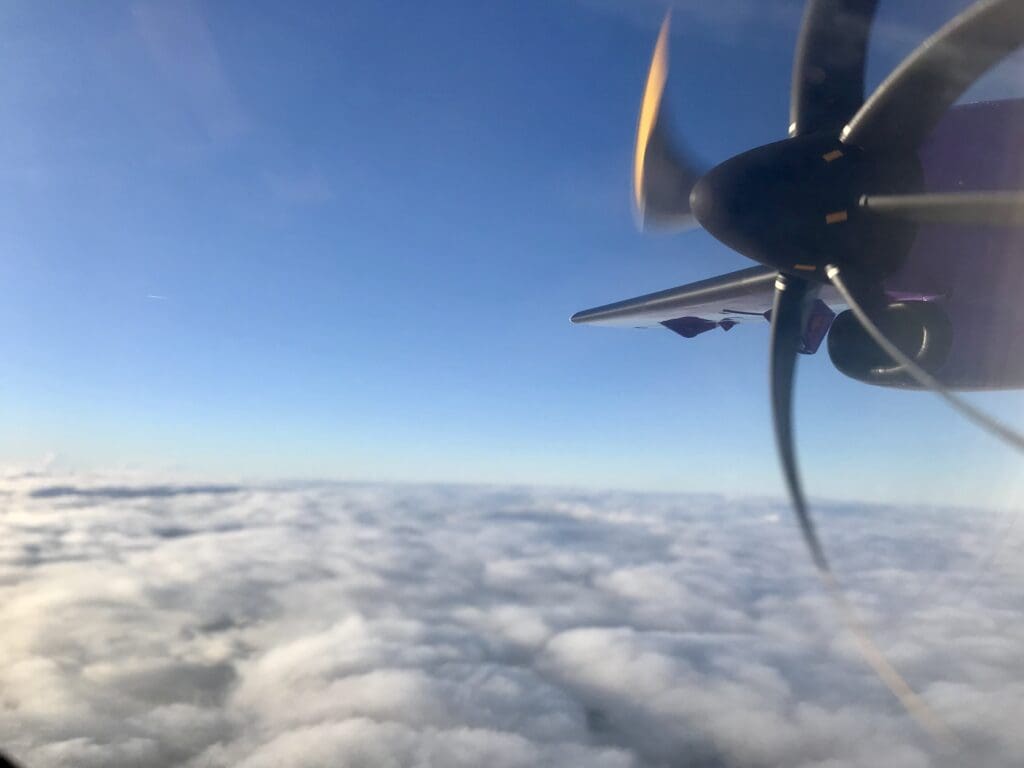
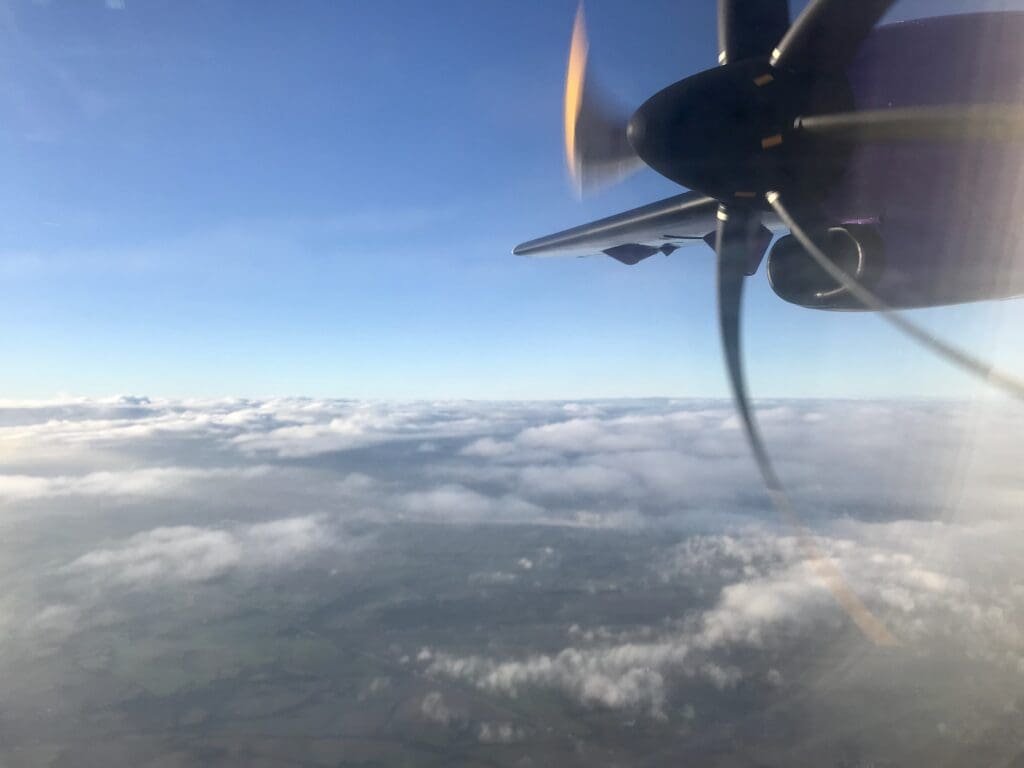
As the aircraft descended below 10,000 feet, this turned almost directly east and headed over Luton before entering Essex and heading over the town of Chelmsford before making its way towards Southend. Unfortunately, the clouds below meant that nothing could be seen outside aside from a distinctive red and white Norwegian Boeing 737 which passed below the aircraft just after this had commenced its descent. Seeing as the flight time for this service rarely exceeds forty minutes, around 45 minutes after the aircraft’s departure I was a little surprised to find that the aircraft had levelled off with no sign that we were set to land any time soon. However, this was soon explained when the captain performed another announcement revealing that we had flown over Southend and crossed the Essex coastline, explaining that due to thick fog, the aircraft was unable to land at Southend thus the flight was required to hold until the visibility improved. With no indication of how long the aircraft would be holding for, I wondered whether a diversion may be in store, however, after spending several minutes flying a large-S shape near Foulness Island, the aircraft’s flaps and gear were lowered indicating that the aircraft would soon land.
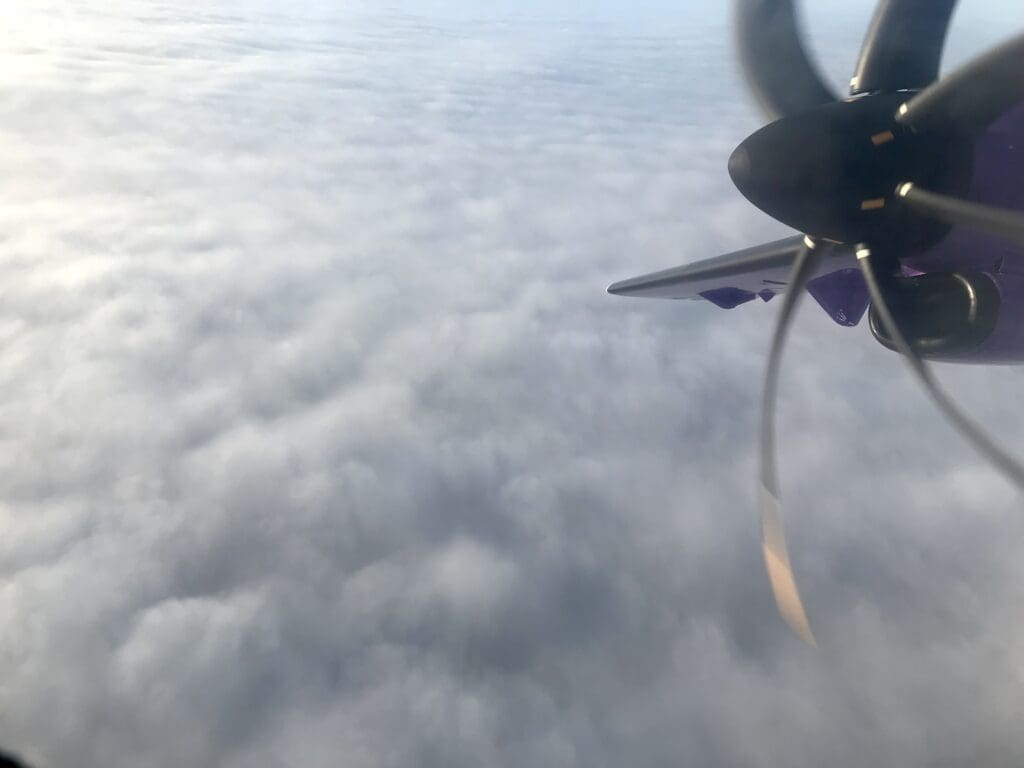
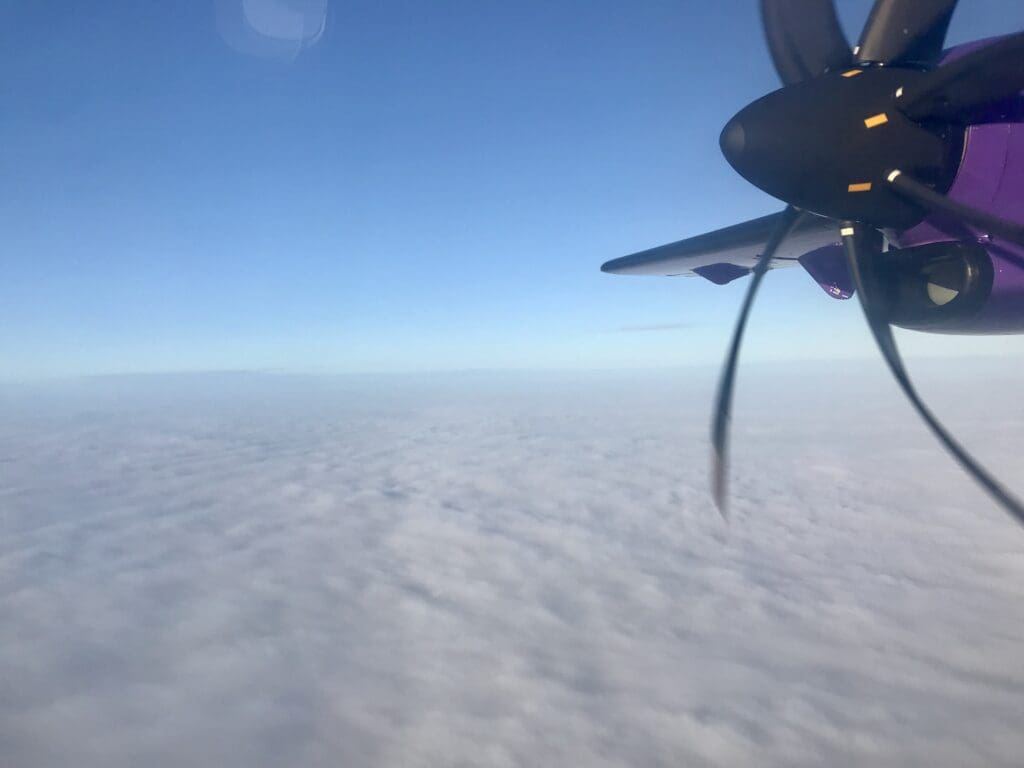
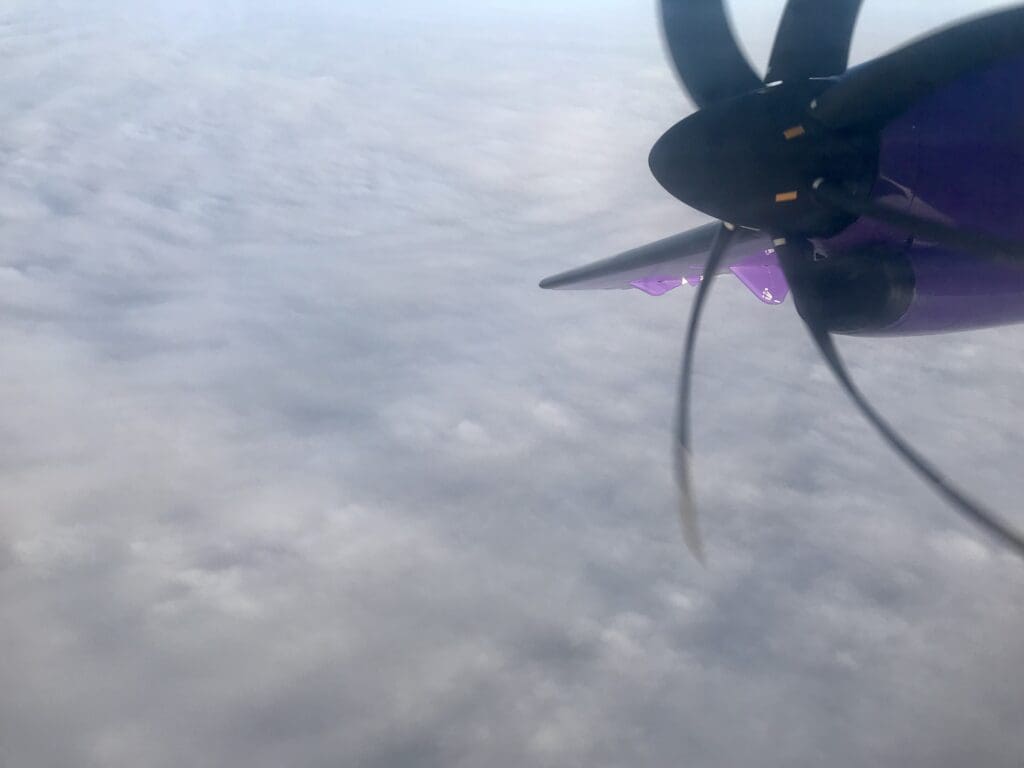
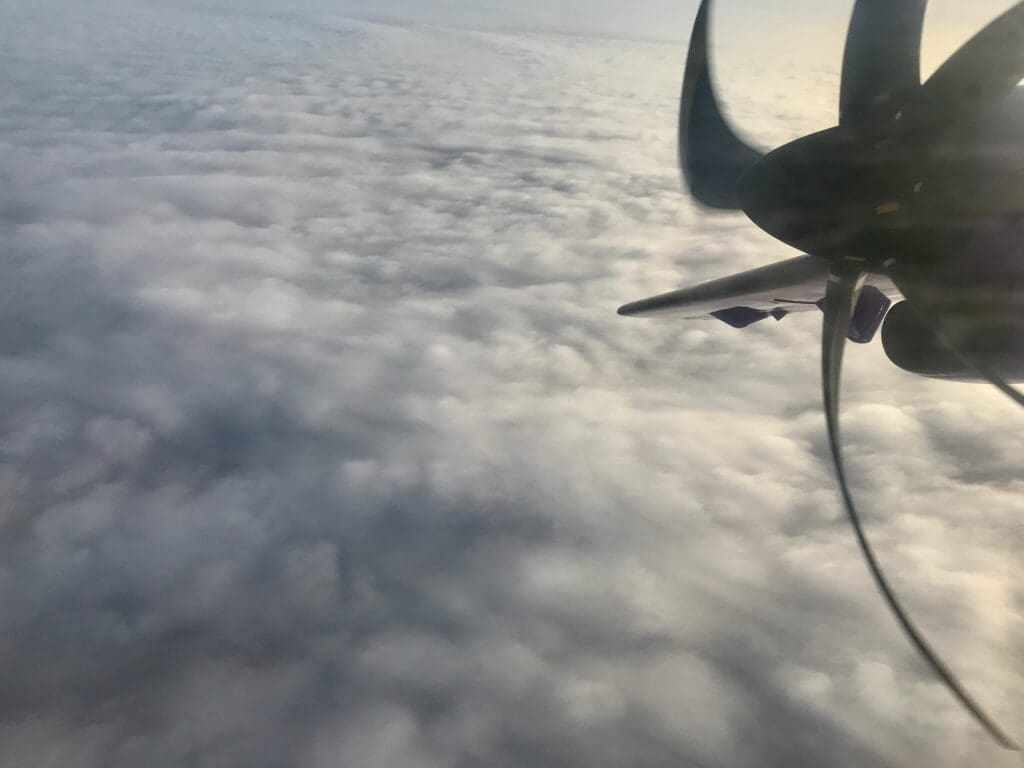
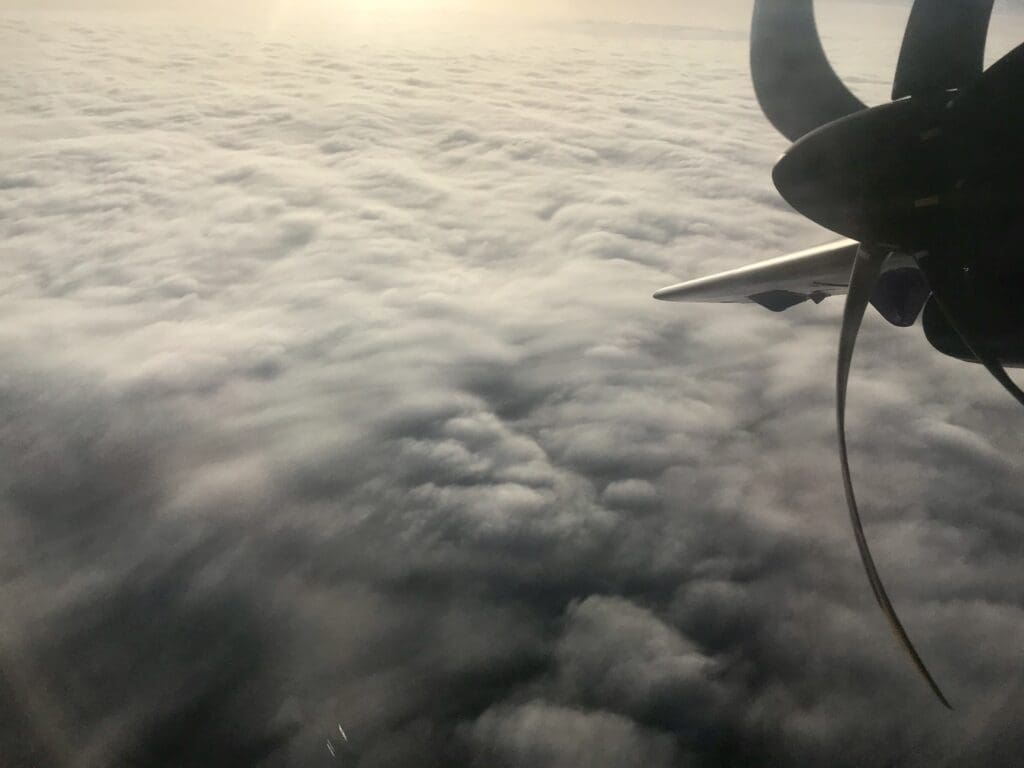
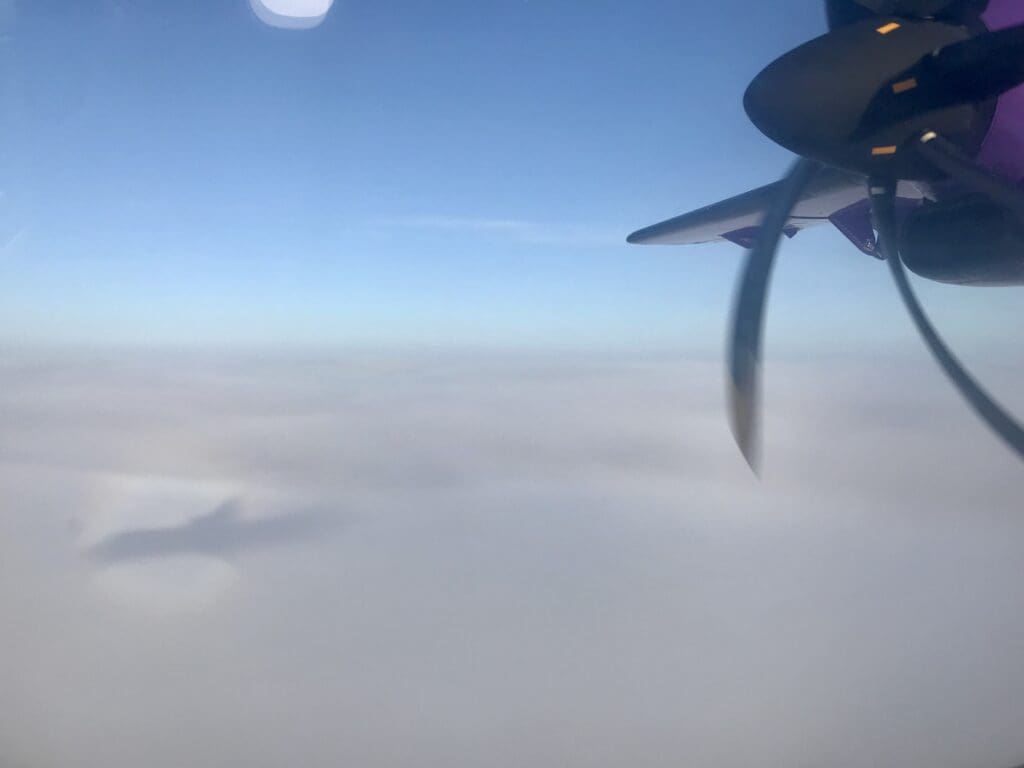
At an altitude of approximately 1000 feet, the aircraft sank into the fog and unsurprisingly, the ground did not come into view until the aircraft was seconds away from touching down. Despite the holding, the aircraft came back to earth at 0926, four minutes ahead of schedule, making a very soft landing on Southend Airport’s Runway 23. As the aircraft gently decelerated, the faint outlines of a collection of stored light aircraft as well as a rare Embraer 110 Bandeirante could be seen. Upon reaching the end of the runway, the aircraft turned around and backtracked before exiting the runway and commencing its short taxi to the apron. During this taxi, a collection of aircraft could be seen on the ground including a locally based Avro RJ100 and a San Marino registered Pilatus PC-12 alongside a Metroliner and Saab 340 visiting from Germany and Hungary respectively.
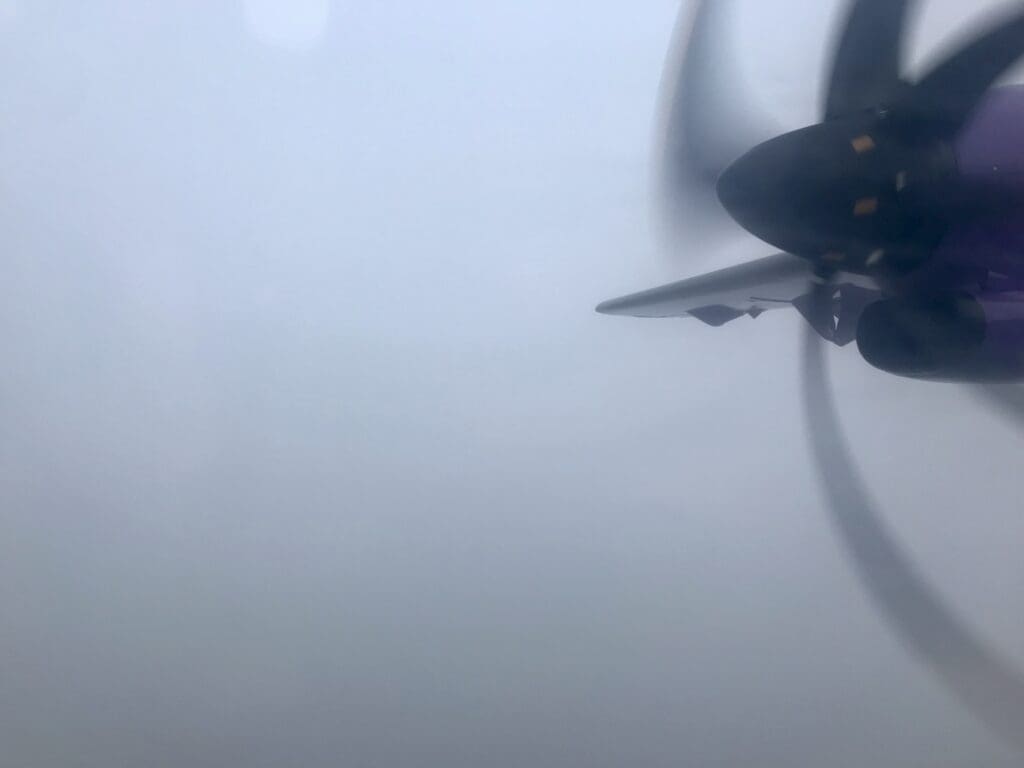
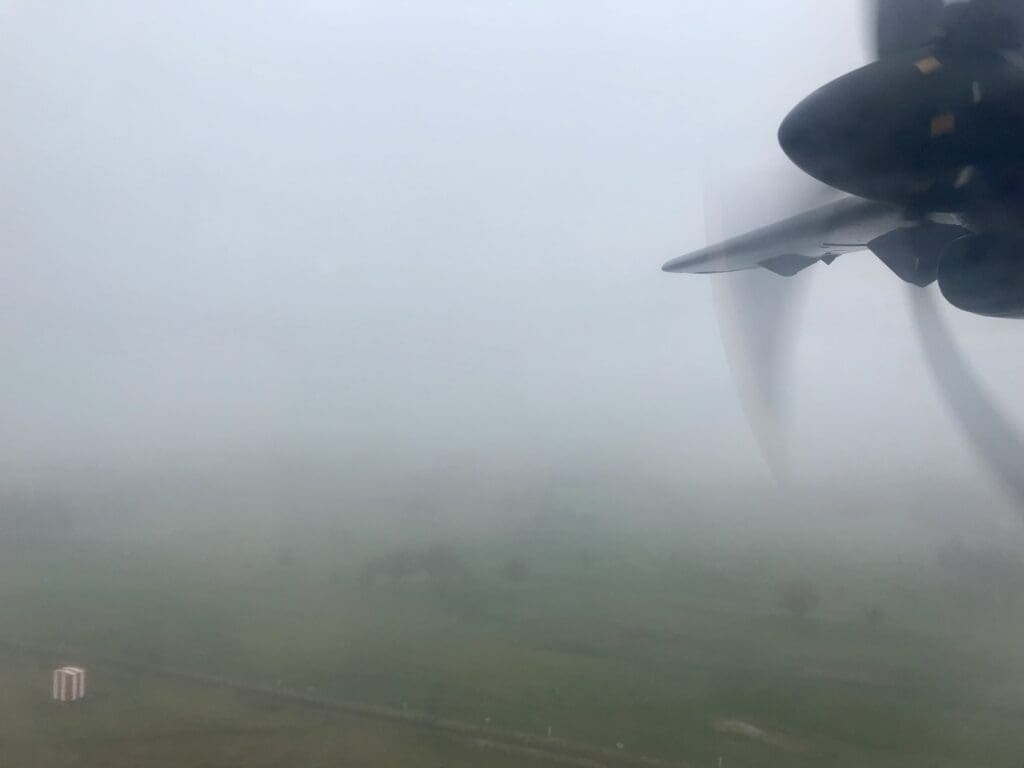
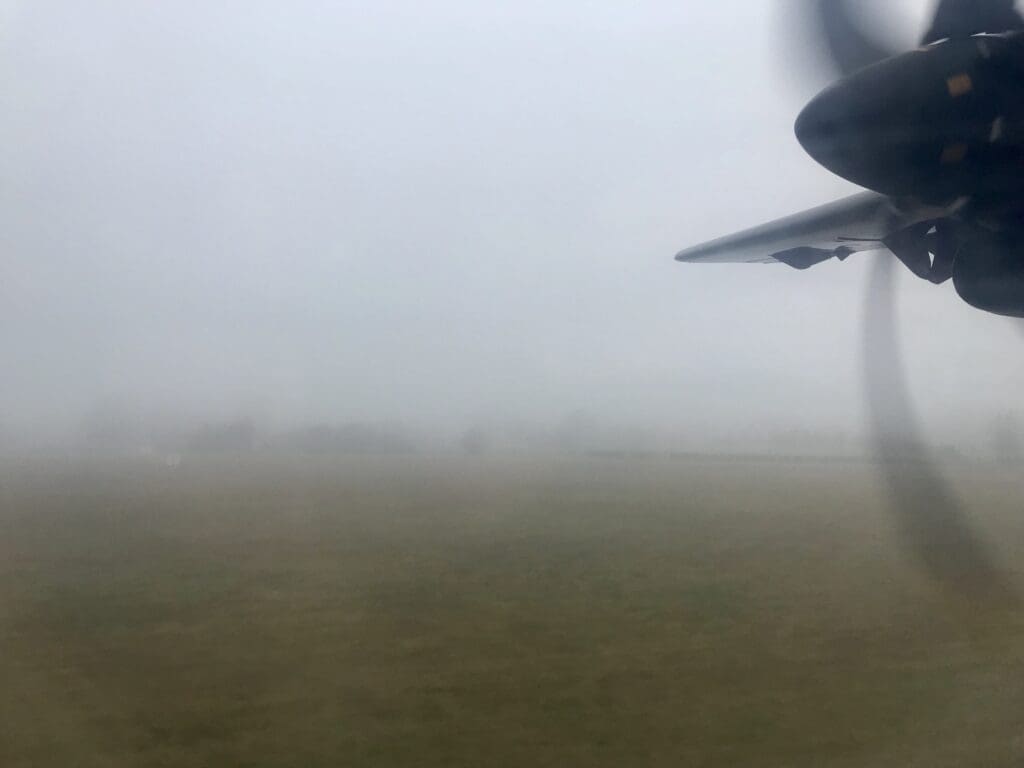
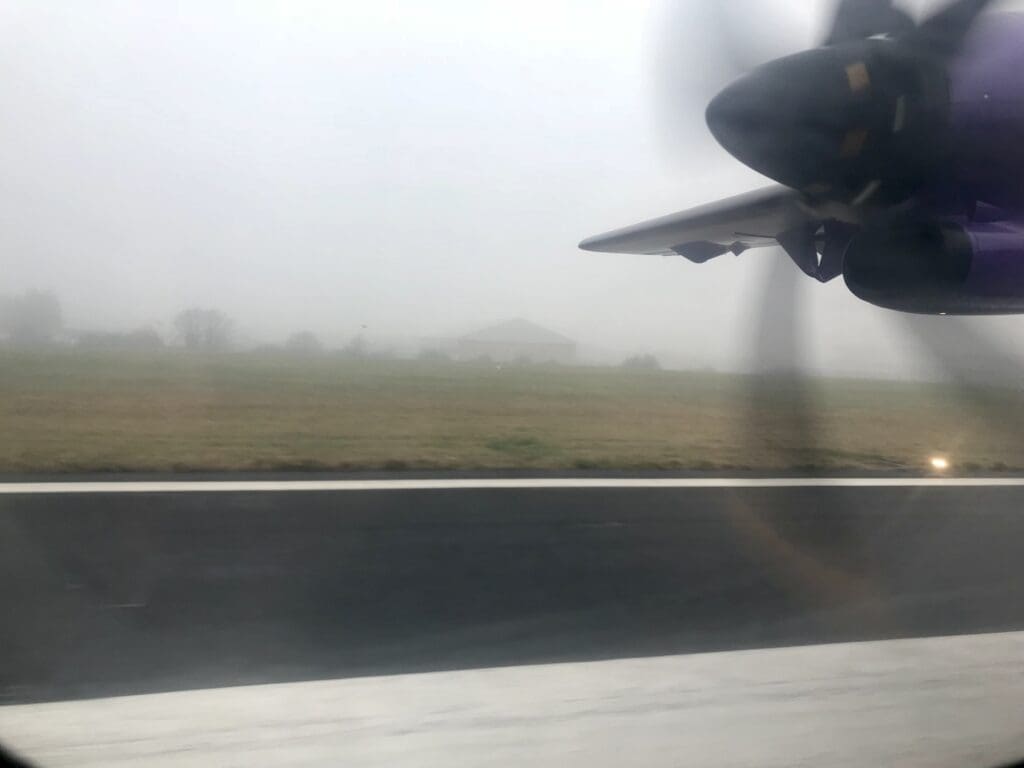
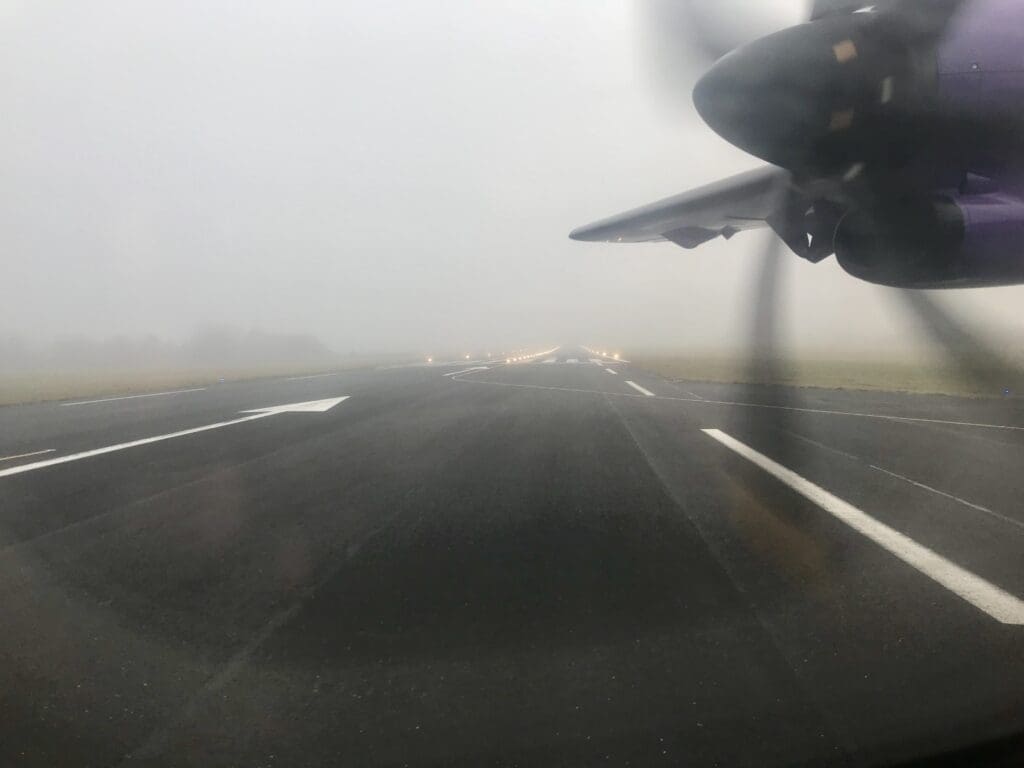
After a short taxi the aircraft pulled into a stand next to Stobart Air’s other Southend-based ATR 72 and after coming to a halt, the engines immediately spooled down and disembarkation commenced almost immediately. With relatively few passengers onboard, I found myself thanking the flight attendant at the rear of the aircraft and disembarking the aircraft in no time after which I made the short walk over to the terminal. Around twenty minutes after touching down, I found myself entering the airport’s station located just opposite the main terminal building, bringing my first experience with Stobart Air to an end.
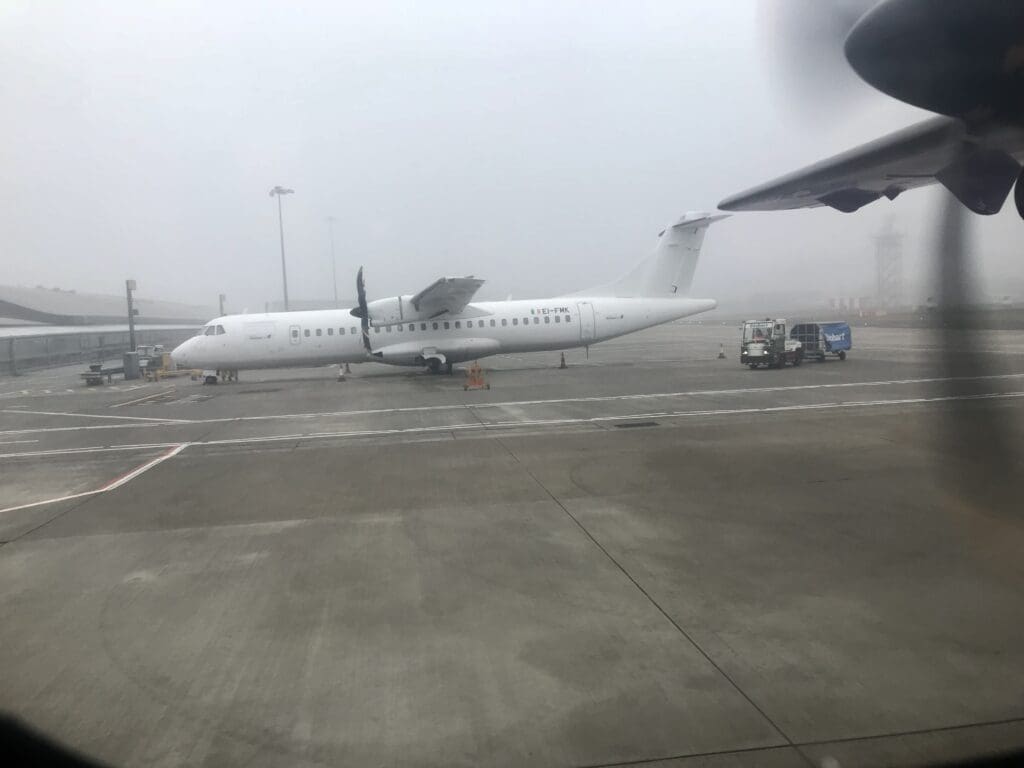
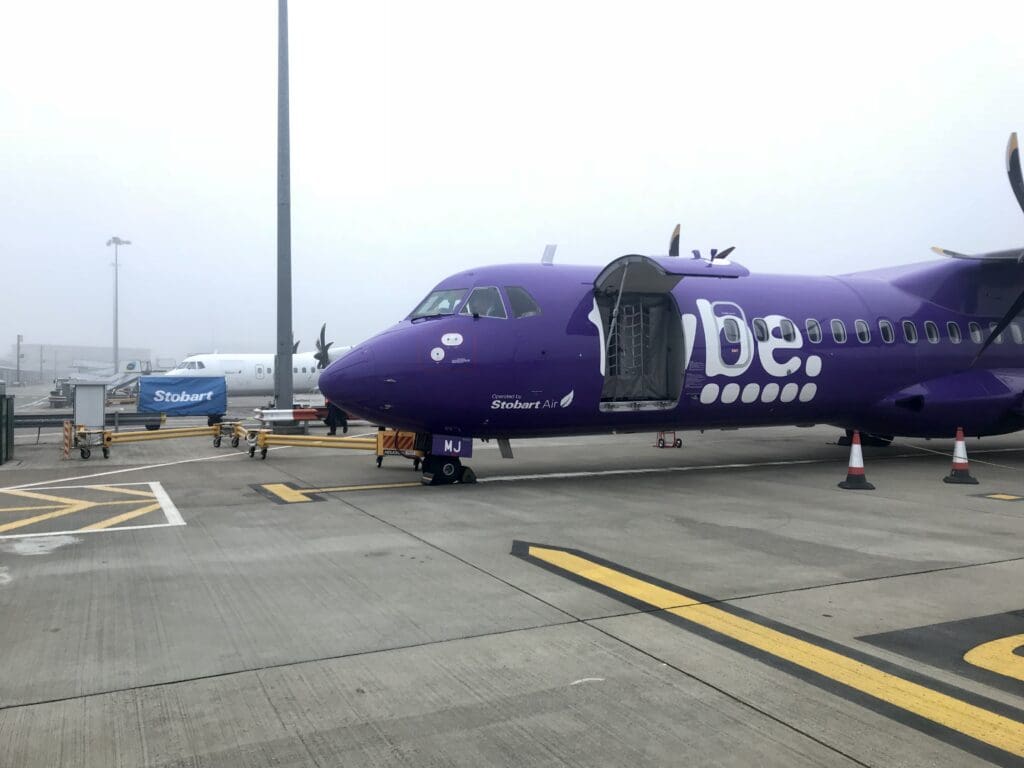
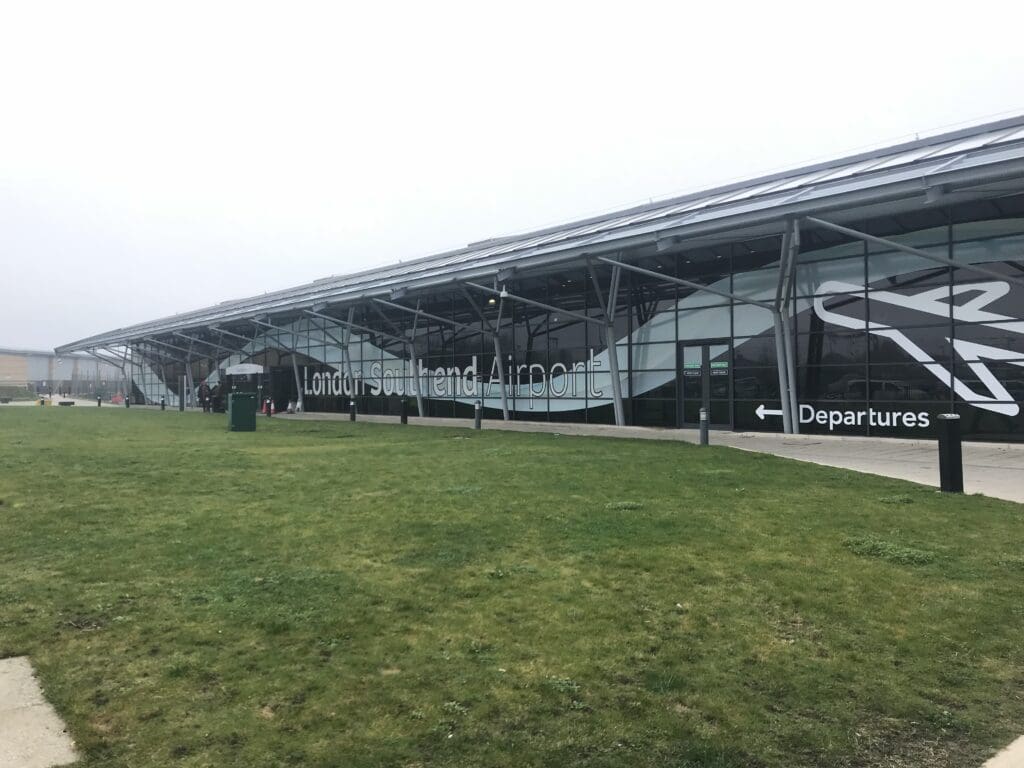
Summary
To very briefly summarise my flight, I was left rather pleased with my first experience with Stobart Air. That morning both crew members proved to be friendly and welcoming and I found the aircraft’s cabin to be comfortable and in good condition.

